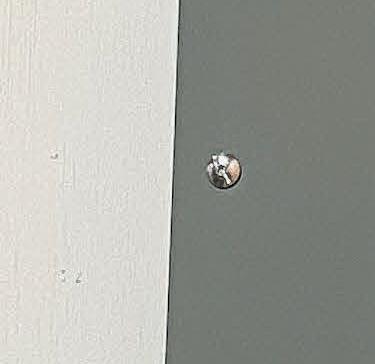













BY ZACH JENSEN DECORAH LEADER STAFF WRITER
When Laurie Meinholz bought the building which houses her chiropractic office in downtown Decorah, she wasn’t immediately sure what to do with the 5,000-square-feet on its second floor. But, after making a number of major repairs to the struggling historic structure, Meinholz decided to invest in her future by creating several second-floor apartments in the building — an investment which she expects will pay off in the future if everything goes well.
“My strategy is that I’m going to own this building til I die,” Meinholz said. “So, I can invest a lot in it now, because hopefully, I have a long life, and I have it for 50 years. If I die in a year, it didn’t really pan out. So, not having a good payout for the first 10 years is okay, because I’m looking at a way to have money coming in during my retirement.”
A place to start
Meinholz said she didn’t know what she was going to do with her life after she graduated from Luther College in 2008. She
Historic renovation
continued on page B-6




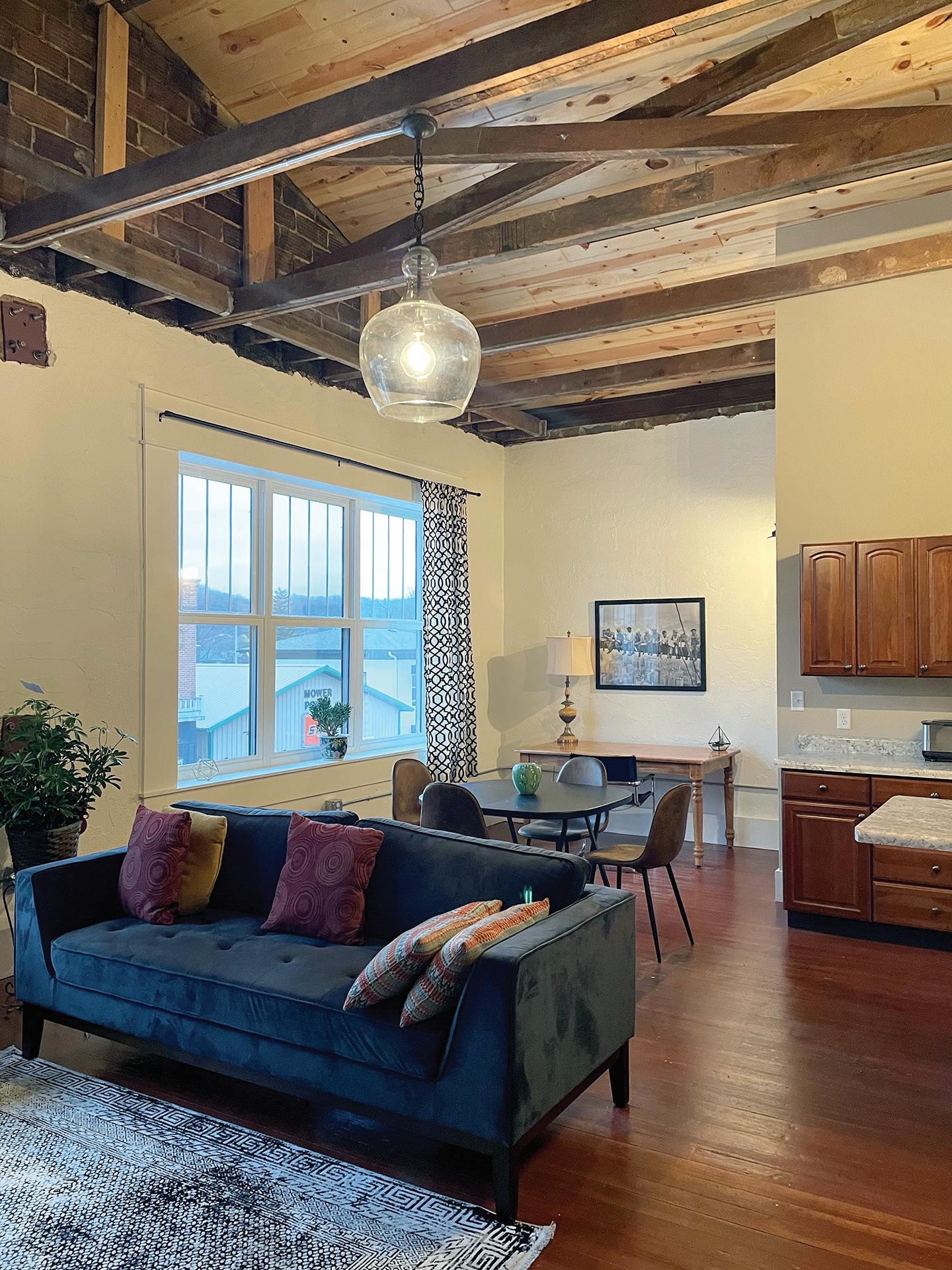










The properties at 207 and 209 East Water Street in Decorah changed hands several times before 1914, when contractor A.R. Coffeen erected a new building on the site for Haugen’s Buick and Oldsmobile dealership. The Haugen Garage included a second-story dance floor. The upper-level dance floor was popular during the 1940s and also served as a roller skating rink, a meeting hall for the Moose Lodge and as a cosmetology school. The basement was once home to the Decorah Athletic Club, which featured boxing and wrestling events during the 1930s.









BY SETH BOYES DECORAH LEADER NEWS EDITOR
Nicole Quandahl said country living fits her family’s tastes. She and her husband Justin purchased about 3.5 acres from Justin’s parents in December of 2020. They built their new home on the lot in 2022 and moved into the house early the next year.
“We wanted to build a house someday — make something our own,” Nicole said. “We had looked at places, but everything we looked at, we would have wanted to renovate, so we figured a new build would be the way to go.”
The house sits near the top of a scenic hill about a half-mile outside Decorah’s city limits near Twin Springs Park.
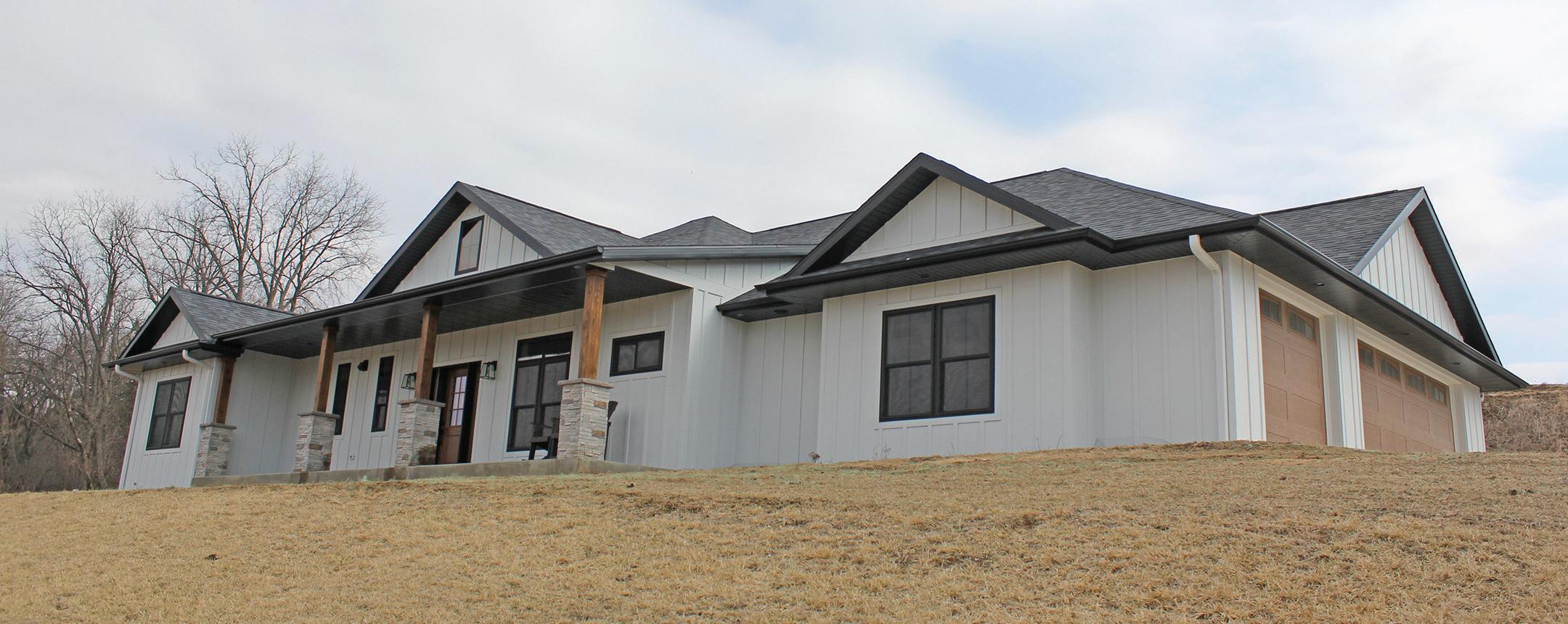




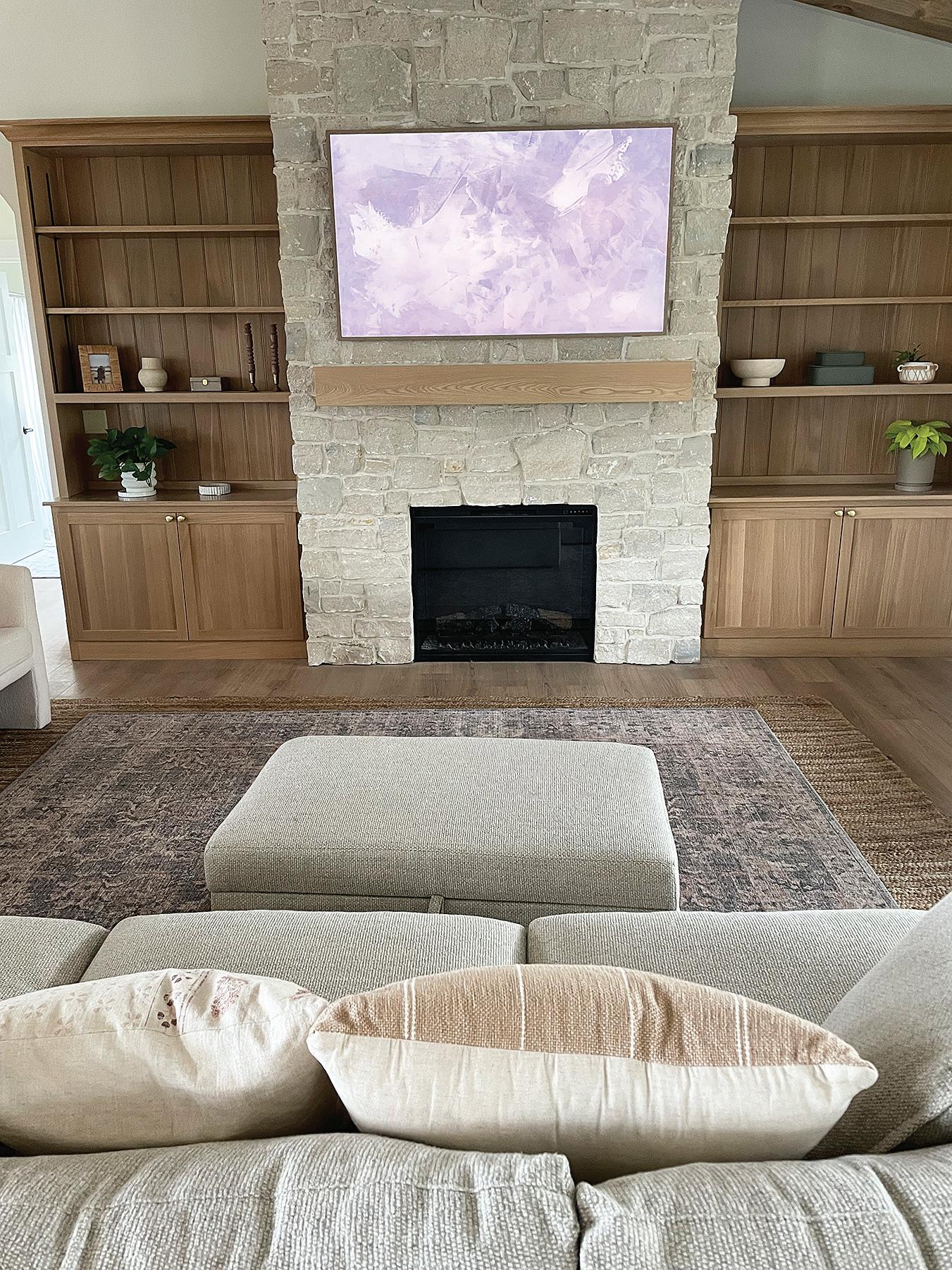
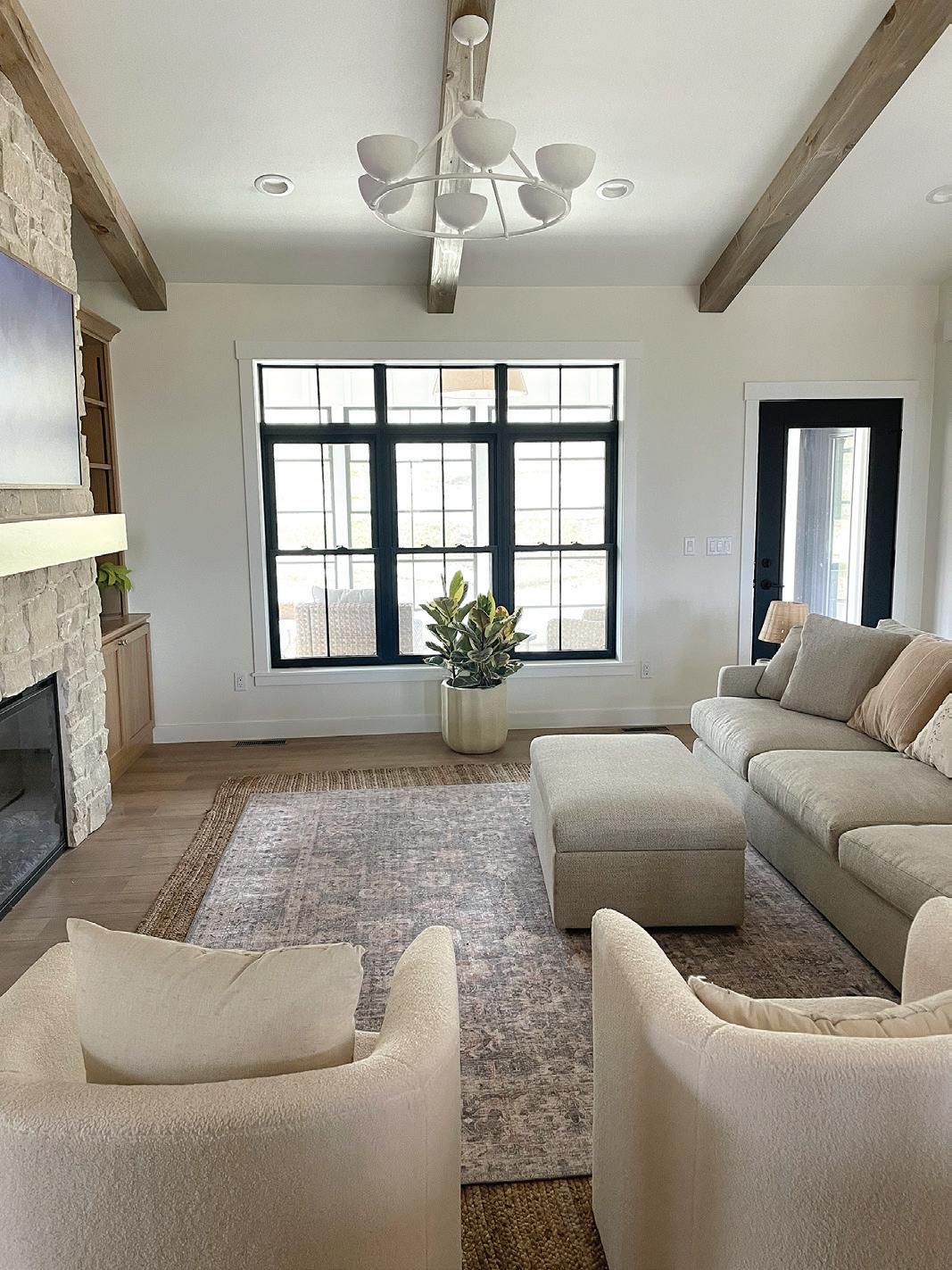

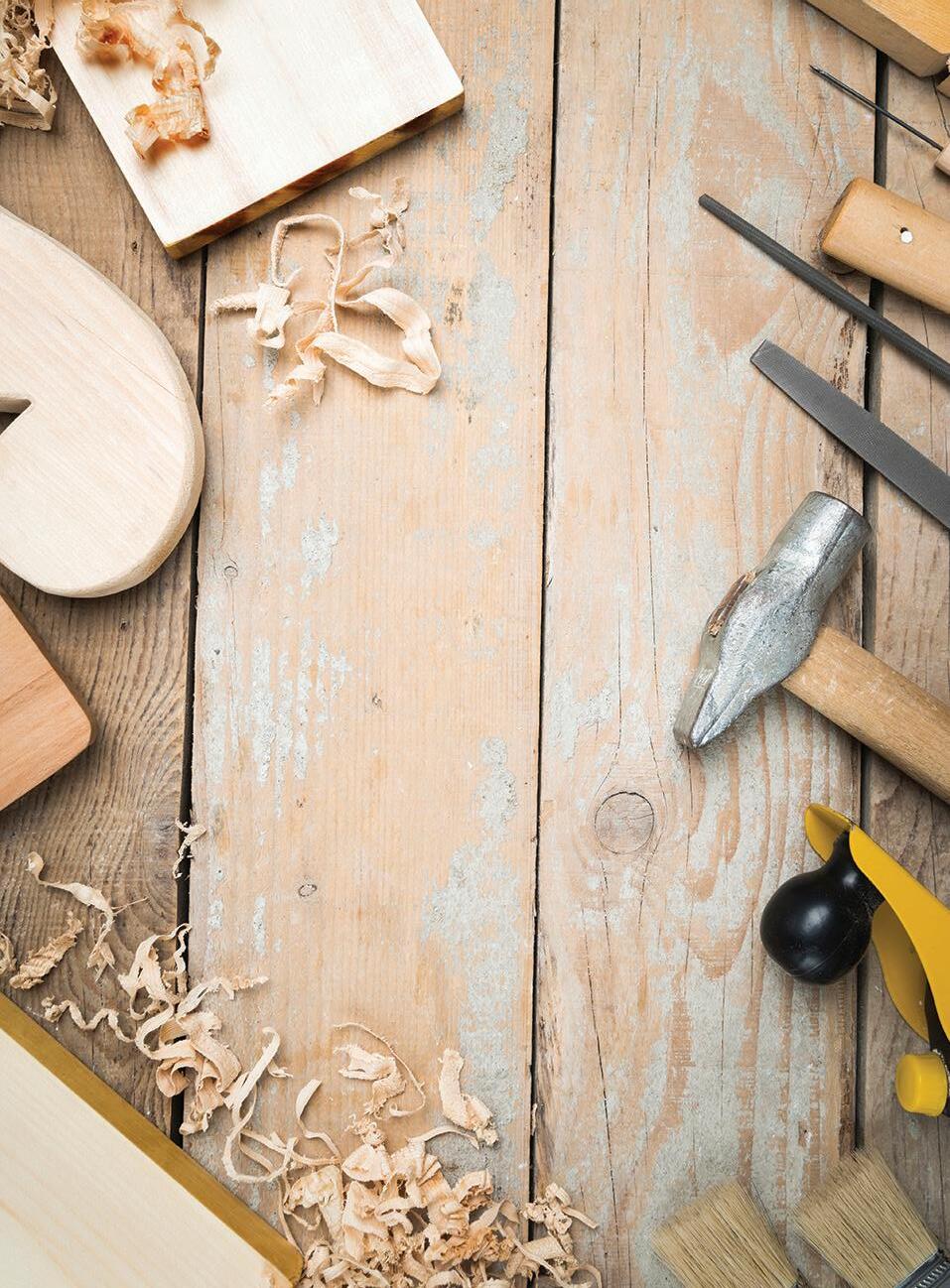

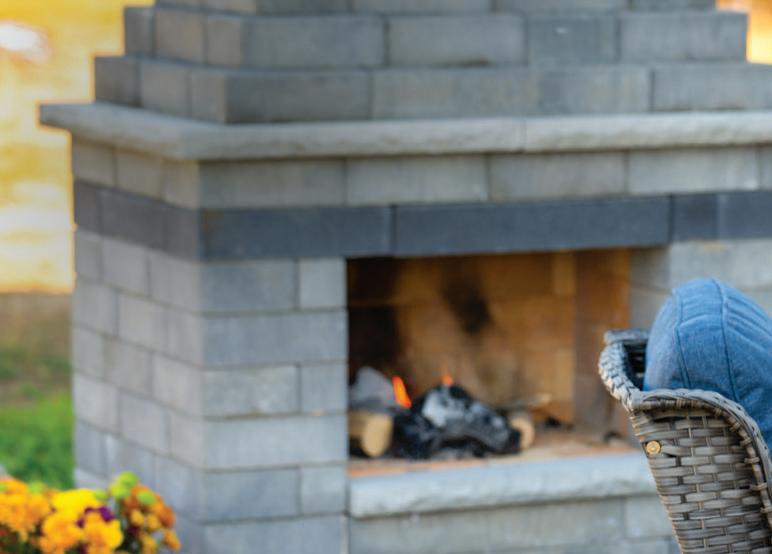
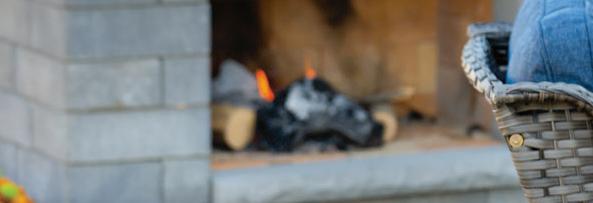

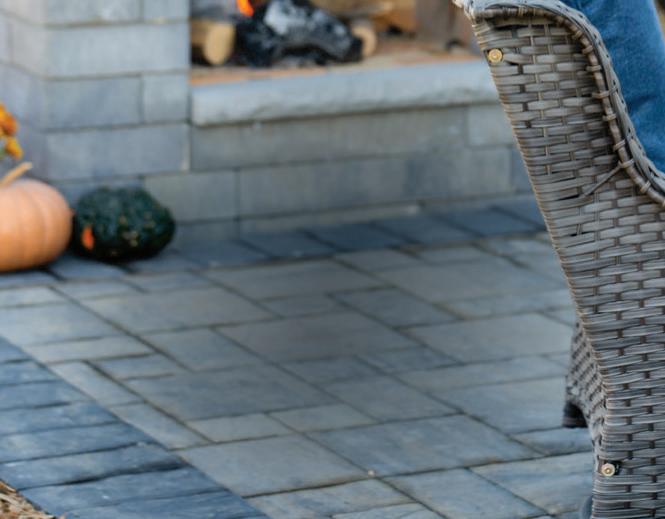


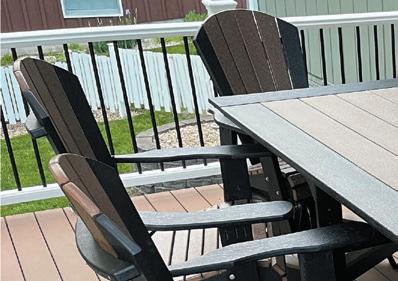
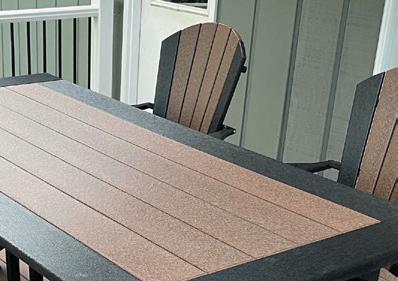


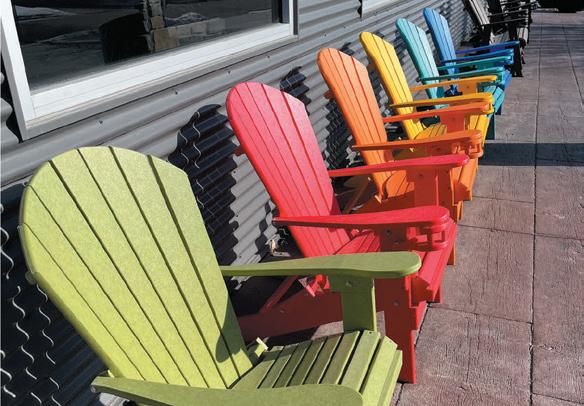




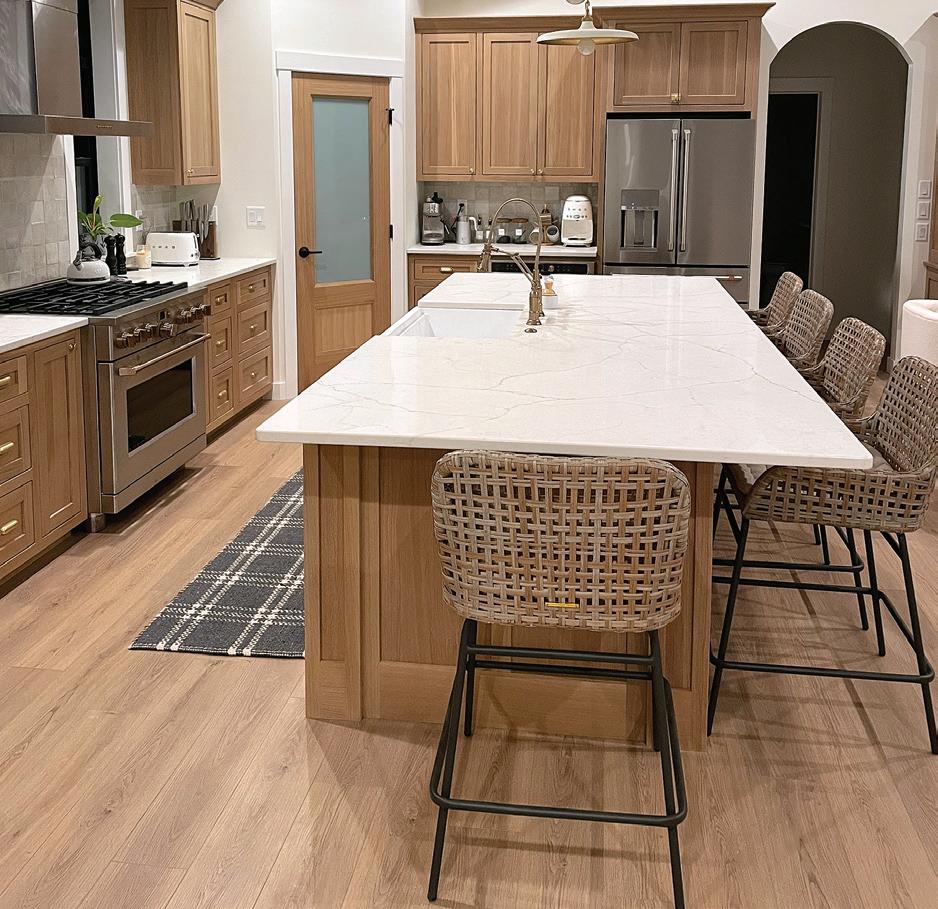
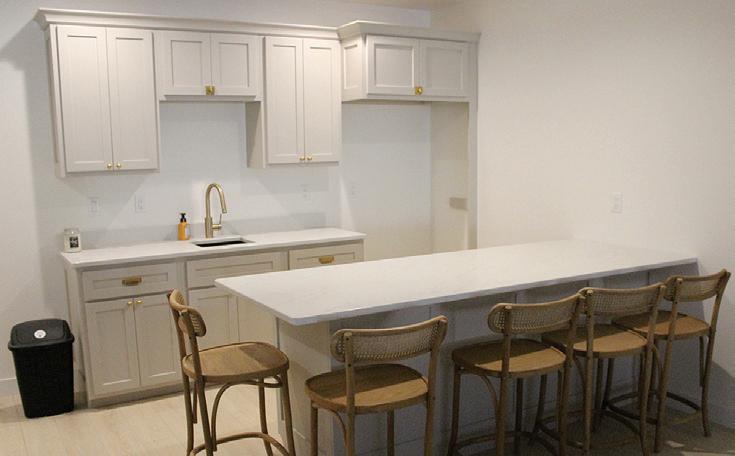

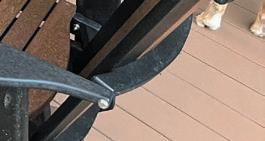
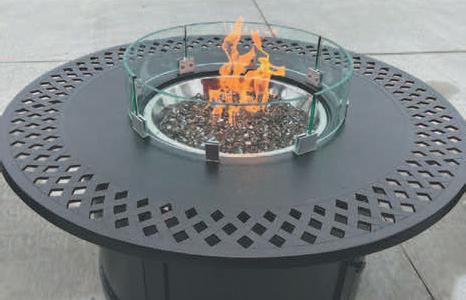

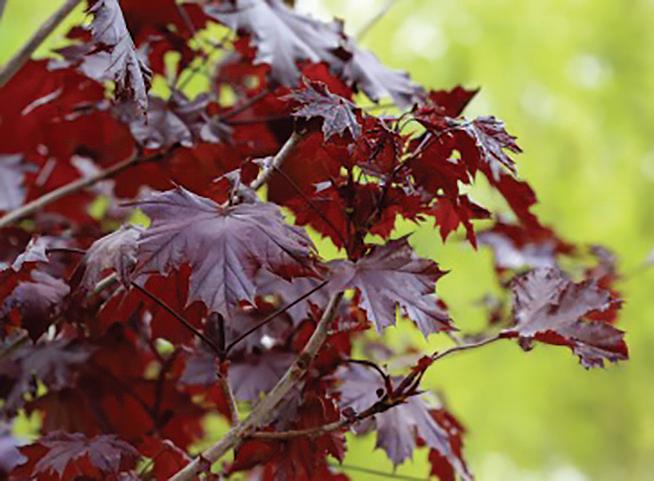


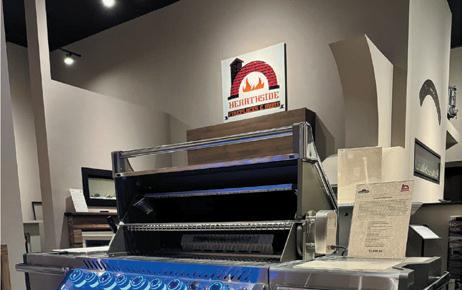
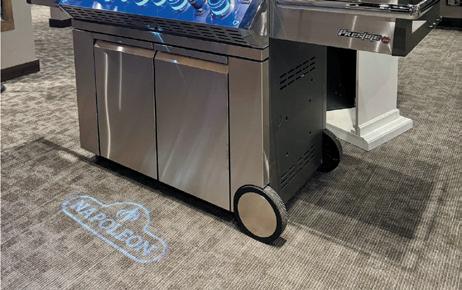
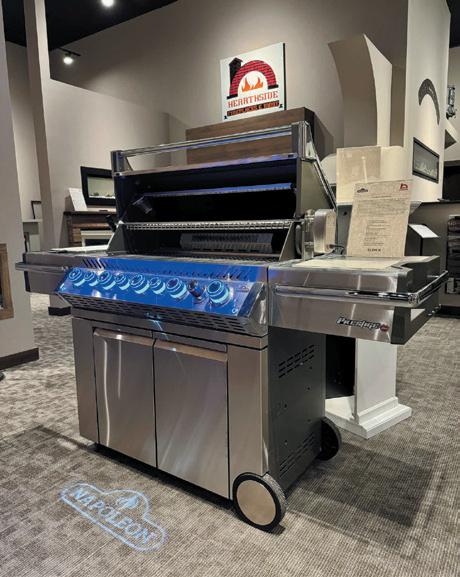

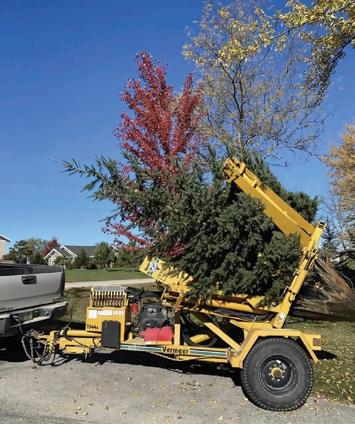
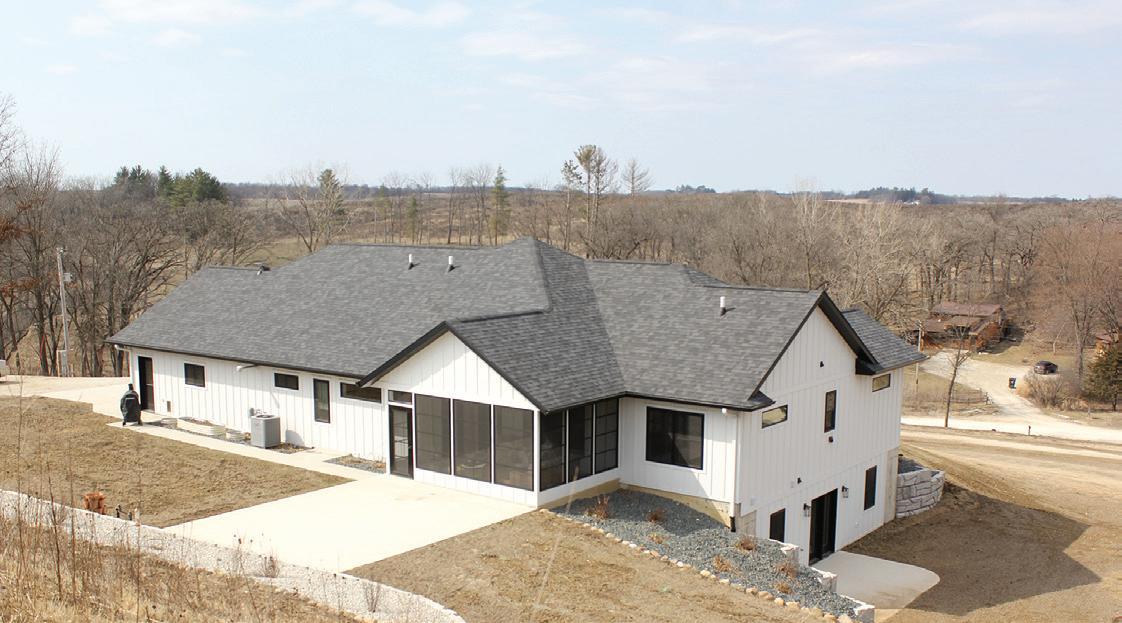





a

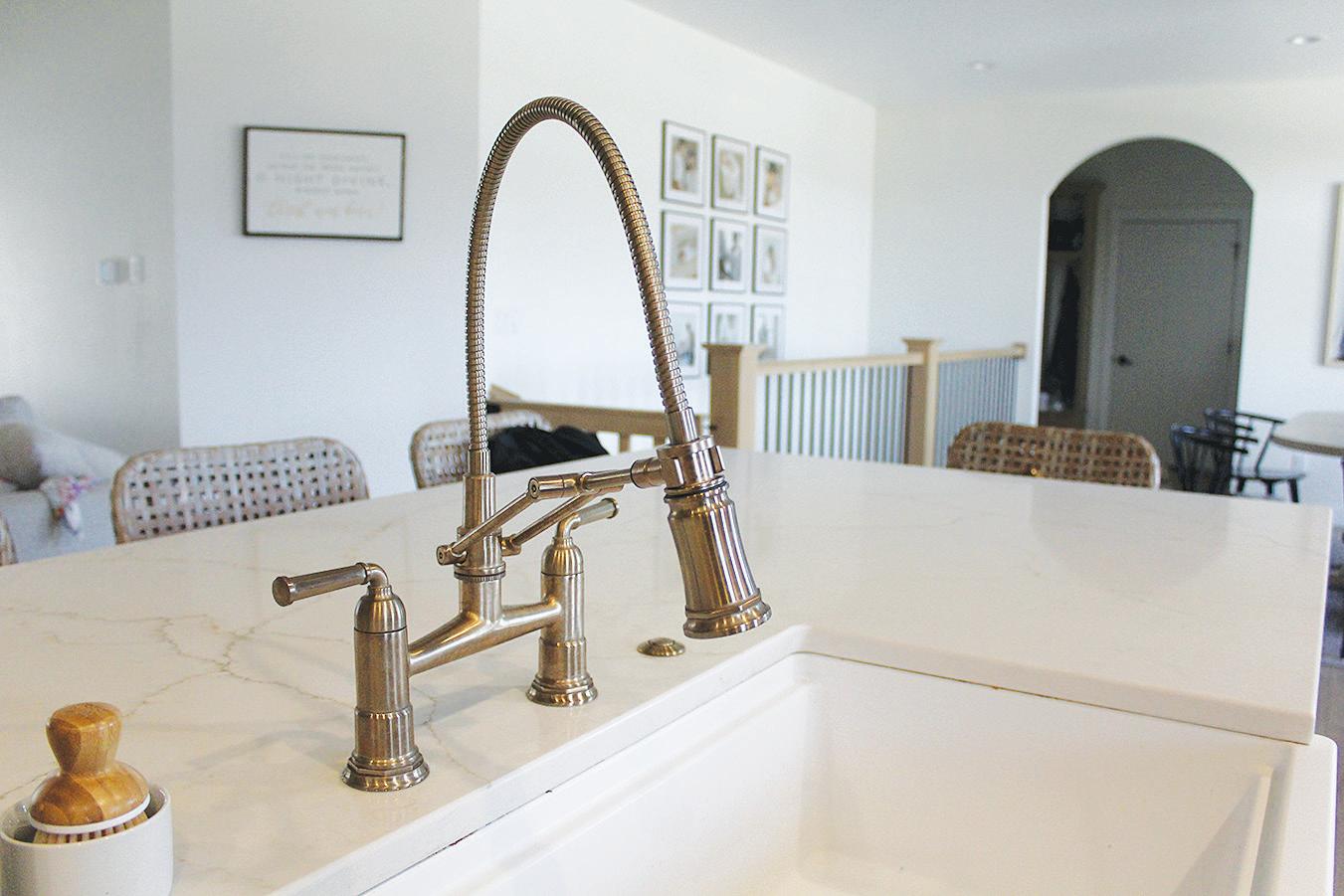
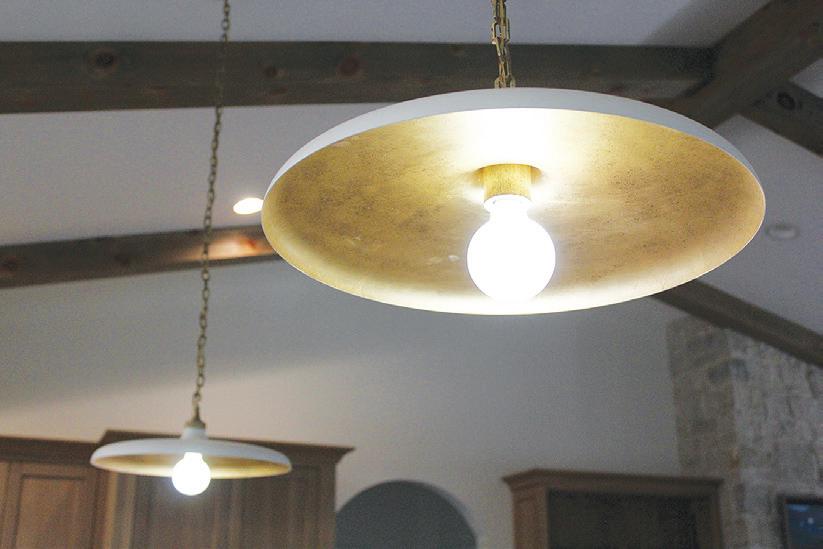
Quandahl home continued from B-2
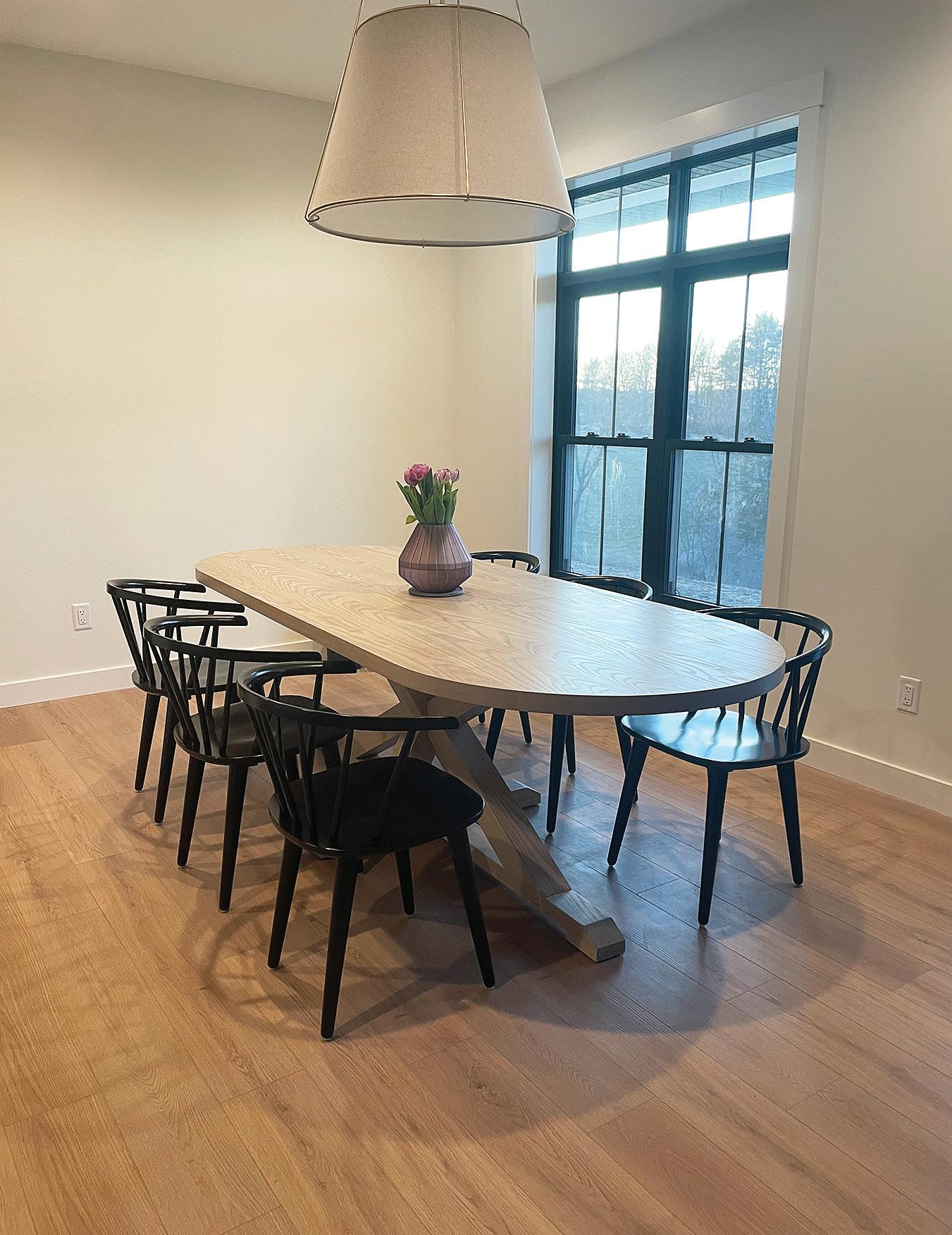
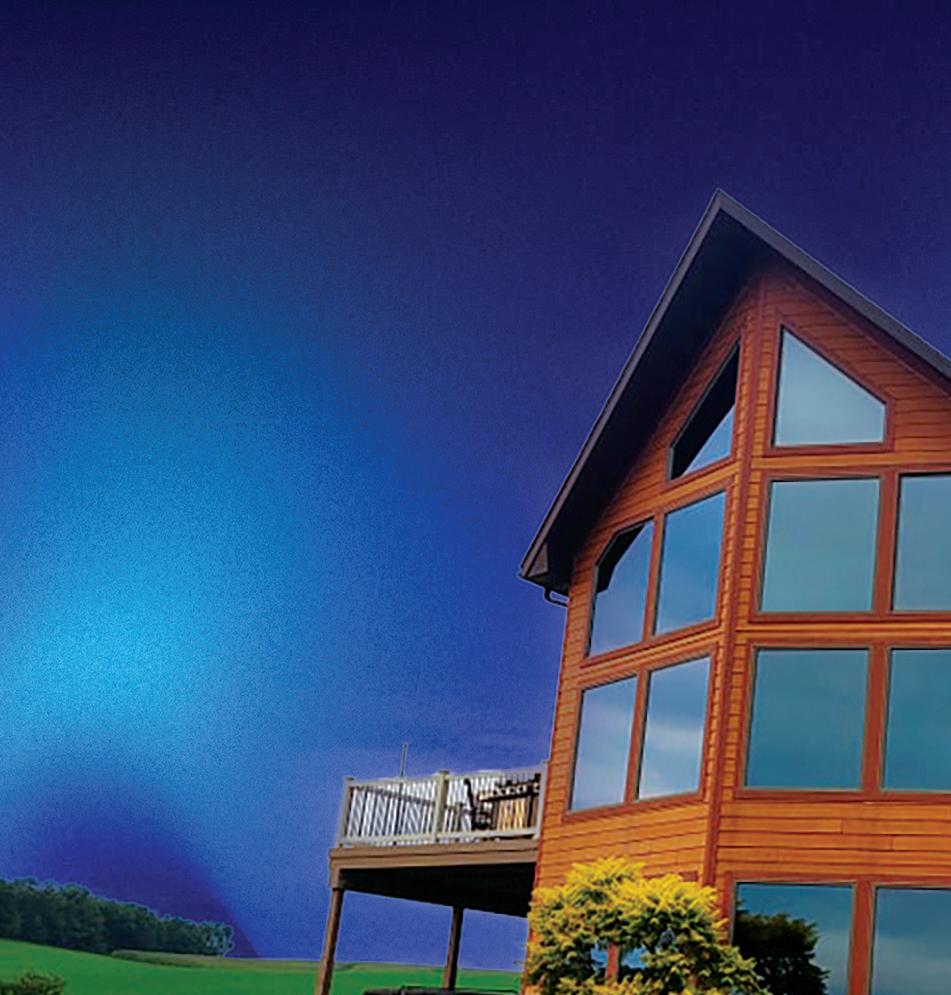


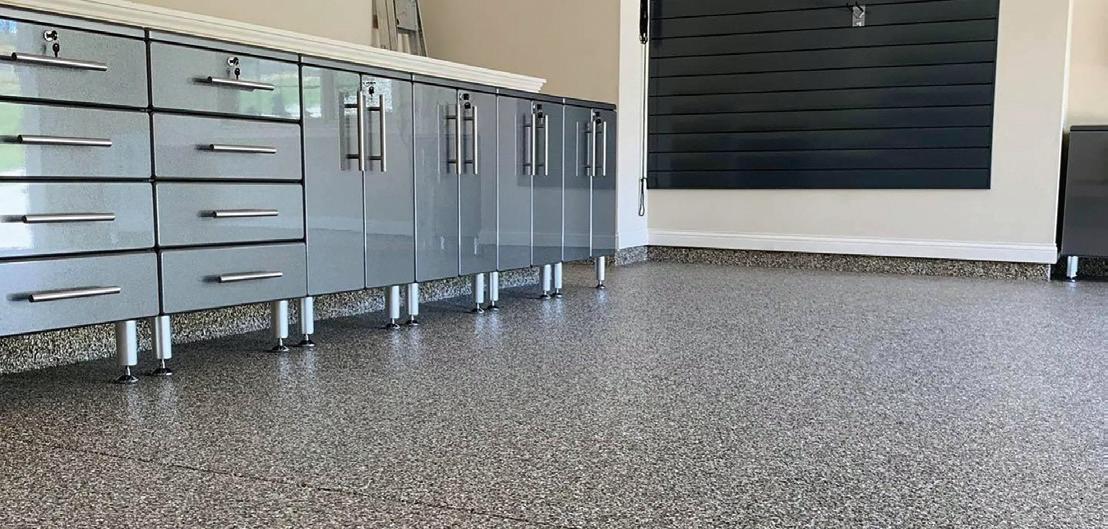


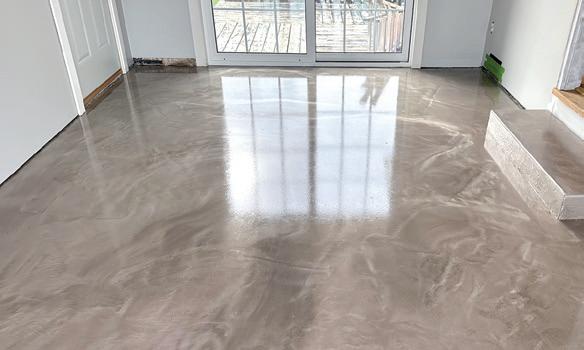
The first floor’s kitchen, living room and dining area were all incorporated into an open concept plan with adjacent bedrooms — Nicole said the kitchen’s large island countertop provides an ideal spot for family and friends to gather during holidays and
Quandahl home continued on page B-4



















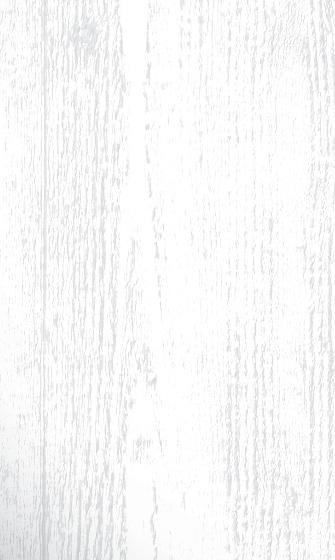

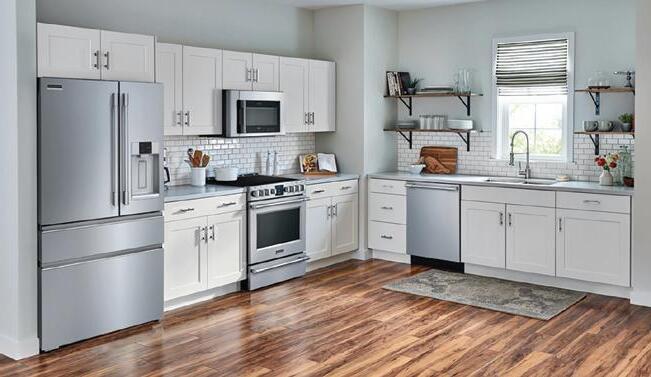





















gardening and raising chickens, into the property’s design — the family’s garden beds and chicken coop are situated near the corner of their lot toward the top of the hill, and the family has also installed play equipment on the opposite side of the house for their young son Sutton.
sought help from interior design company KL Design in Decorah. Nicole ultimately found she favored design elements with neutral hues — elements like white walls, woodgrain and clay tile or light stone are present throughout the new build.
“We did all cafe appliances in the kitchen,” she said. “They’re more expensive, but I feel like they’re more of a statement for the kitchen.”
The family also added a cement patio off their sunroom last summer. Nicole said the two spaces have become some of her family’s favorite areas of their new home.
Choosing a rural site for their build also allowed the Quandahls to more easily incorporate some of their interests, like
“Just living in the country in general is great,” Nicole said. She went on to say, while building a new home calls for many decisions on seemingly every detail, she found the process enjoyable.
“I love designing things,” she said. “I think in another life I would have been an interior designer, because I love doing that kind of stuff. It was making a lot of decisions, but I loved being able to hand-pick everything that went into the house — that was my style — whereas I feel like, if we would have bought a house, I would have wanted to change a lot of things and make it my style. I think it’s worth it in the end — building a house — because you can get exactly what you want.”
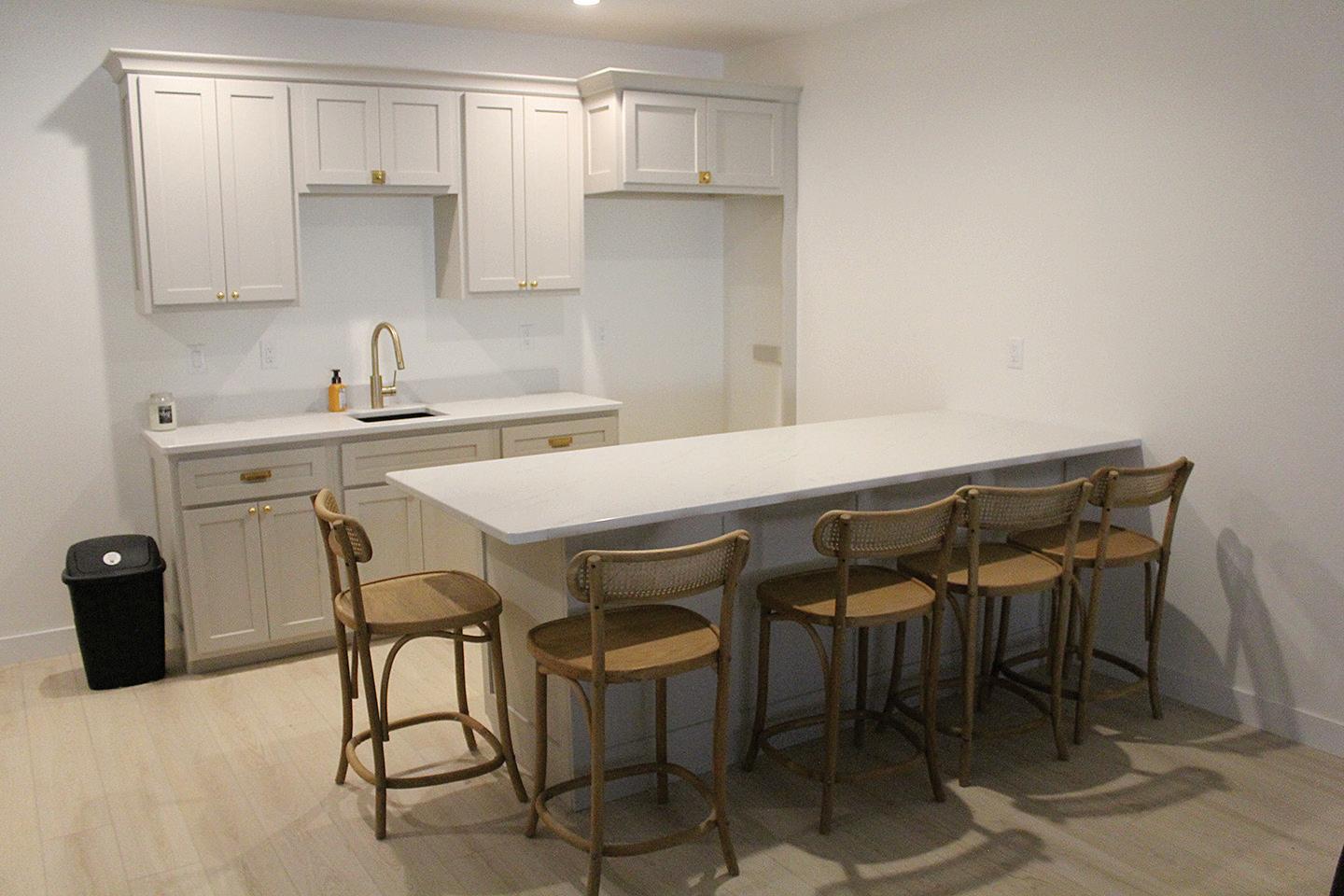

Though a fair amount of earth moving took place in preparation for the construction of the Quandahl’s home, the family chose to factor for the property’s rolling rural hillside in their home design. (Photo by Seth Boyes)
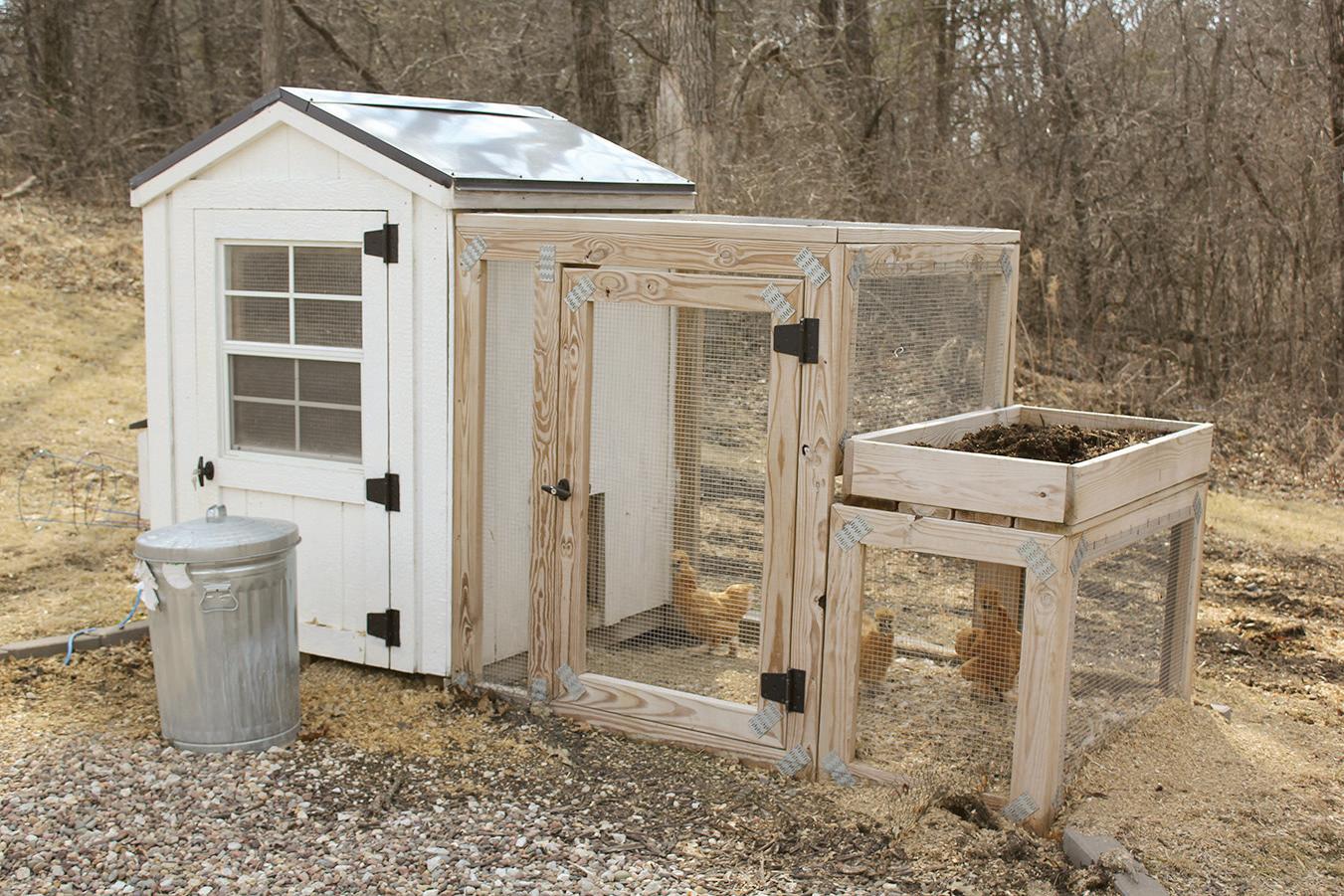
ABOVE- Building a rural home has allowed the Quandahls to more easily incorporate some of their interests, like gardening and raising chickens, into the property's layout.
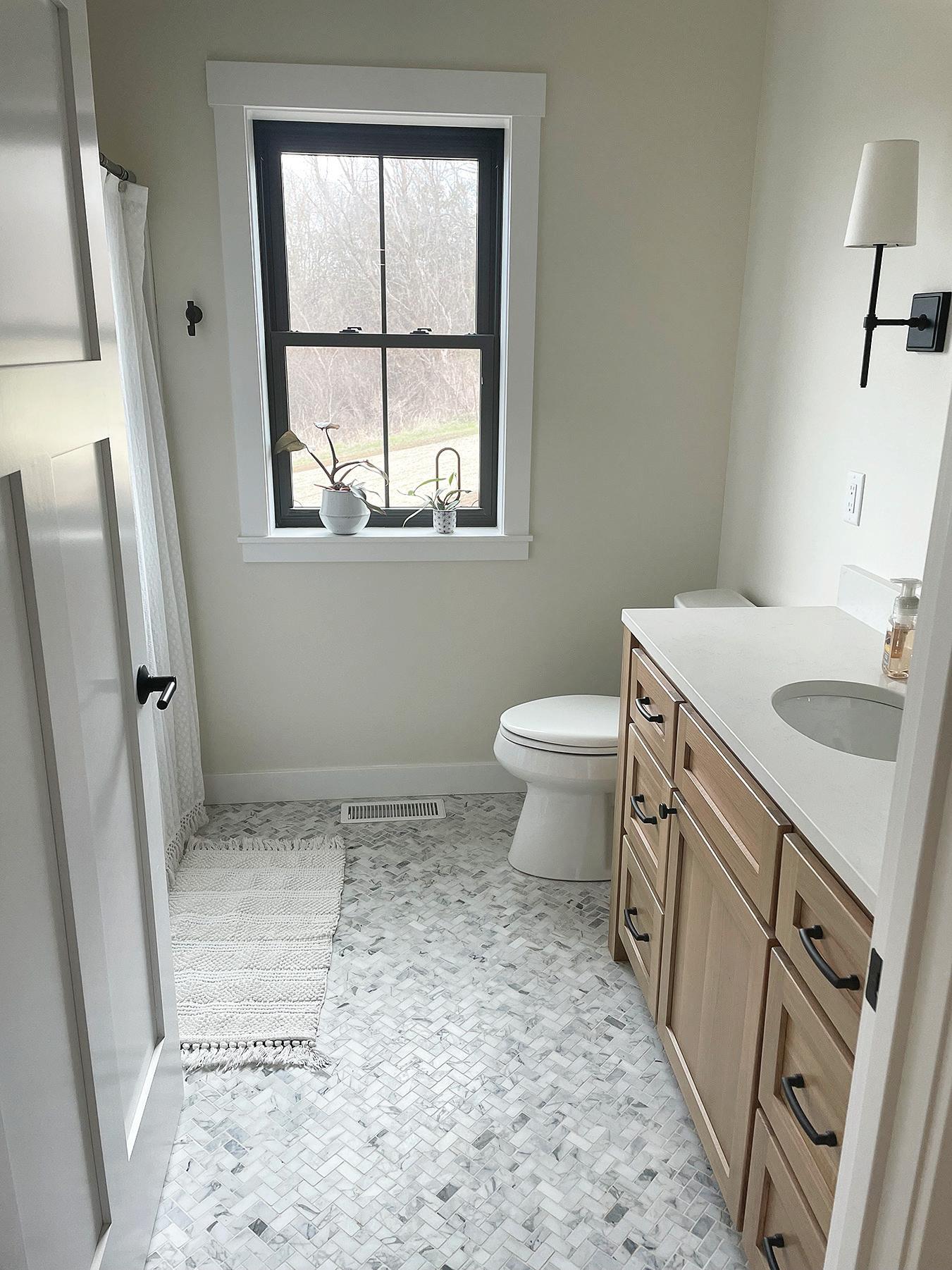
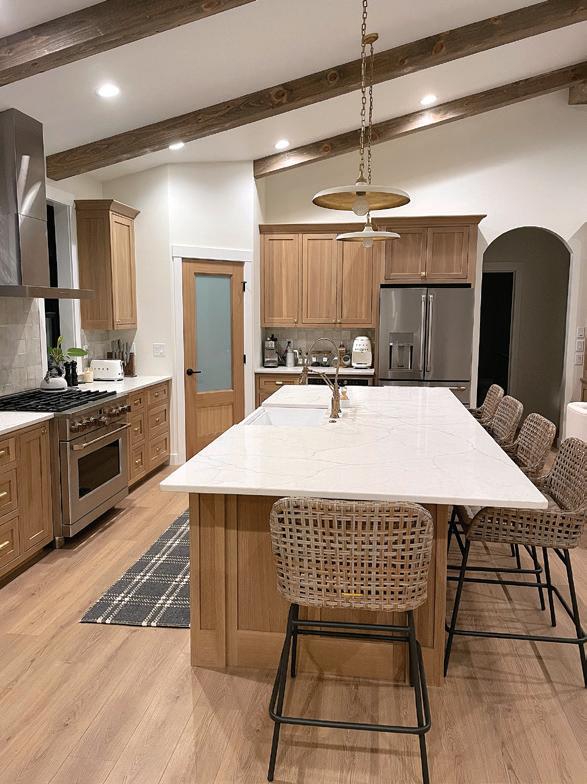
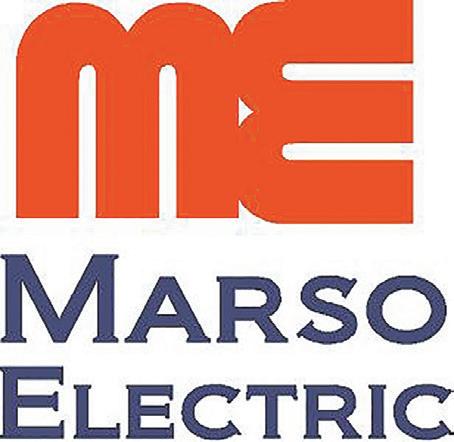


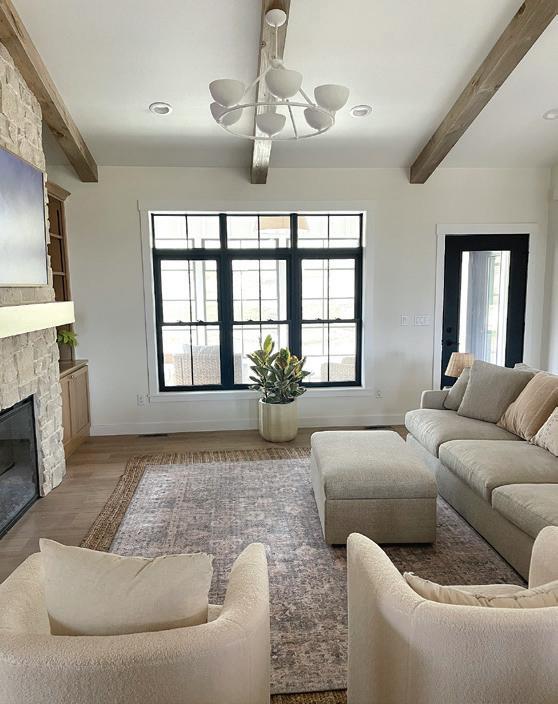





LEFT- The Quandahl home features an open concept design on its first floor, with additional space for entertaining guests on its lower level. RIGHT- A pair of rocking Adirondack chairs rest on the front porch of the Quadahl family’s home, offering scenic views from the rural hilltop. (Photos by Seth Boyes)
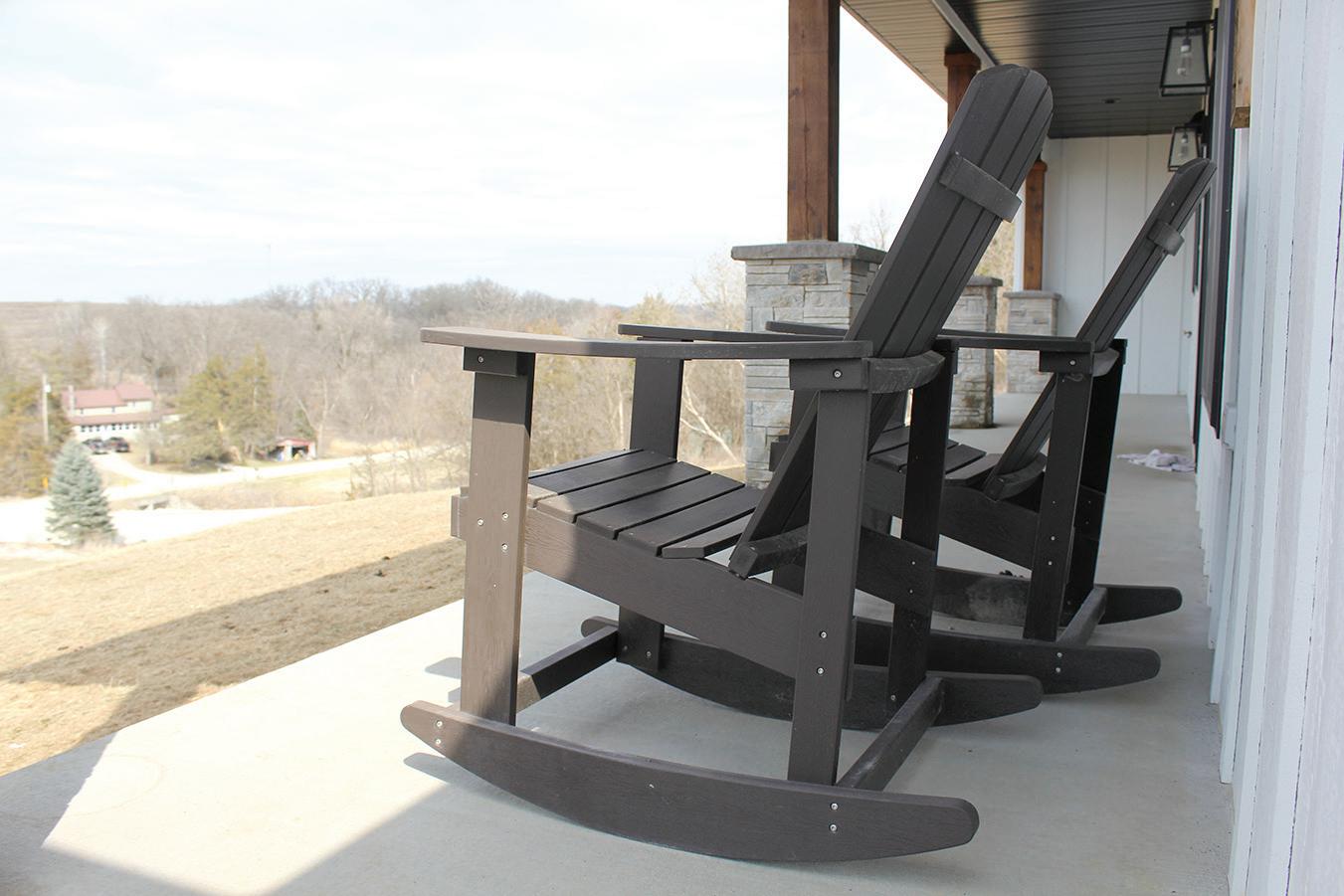
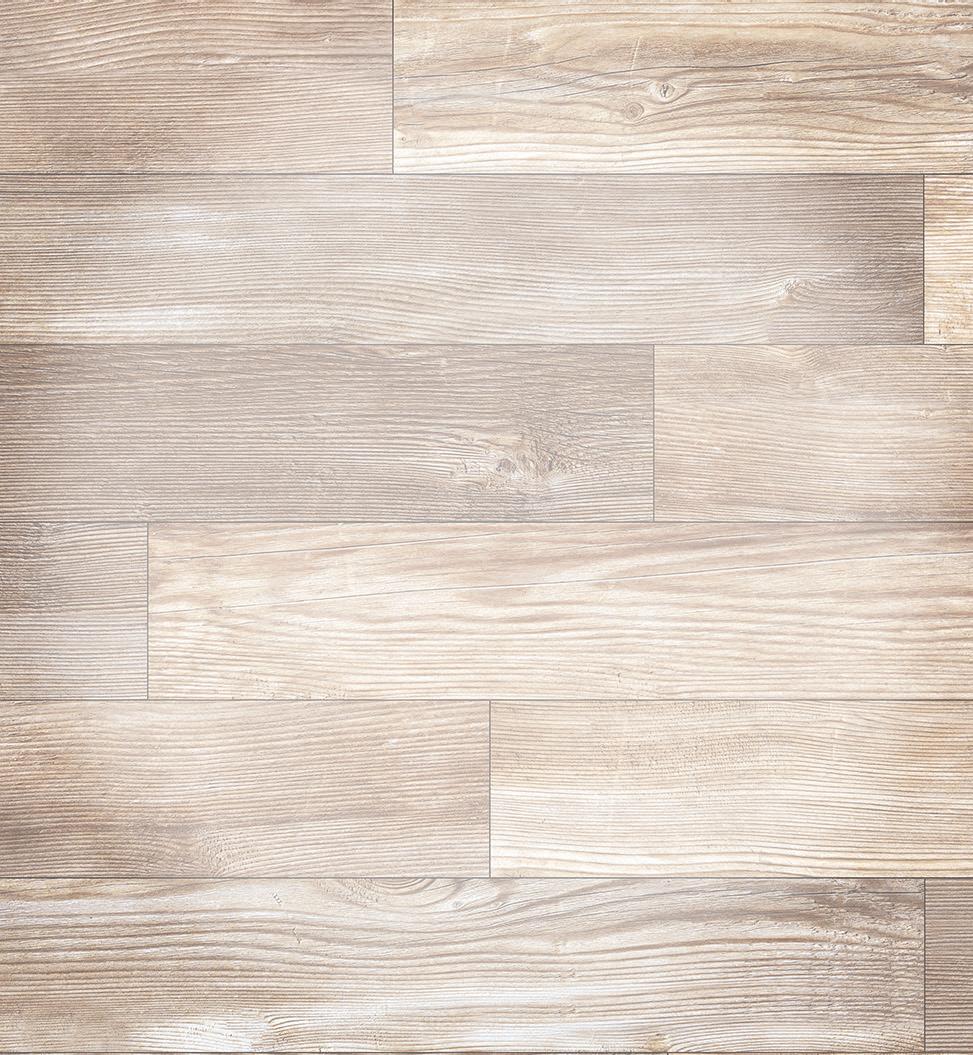




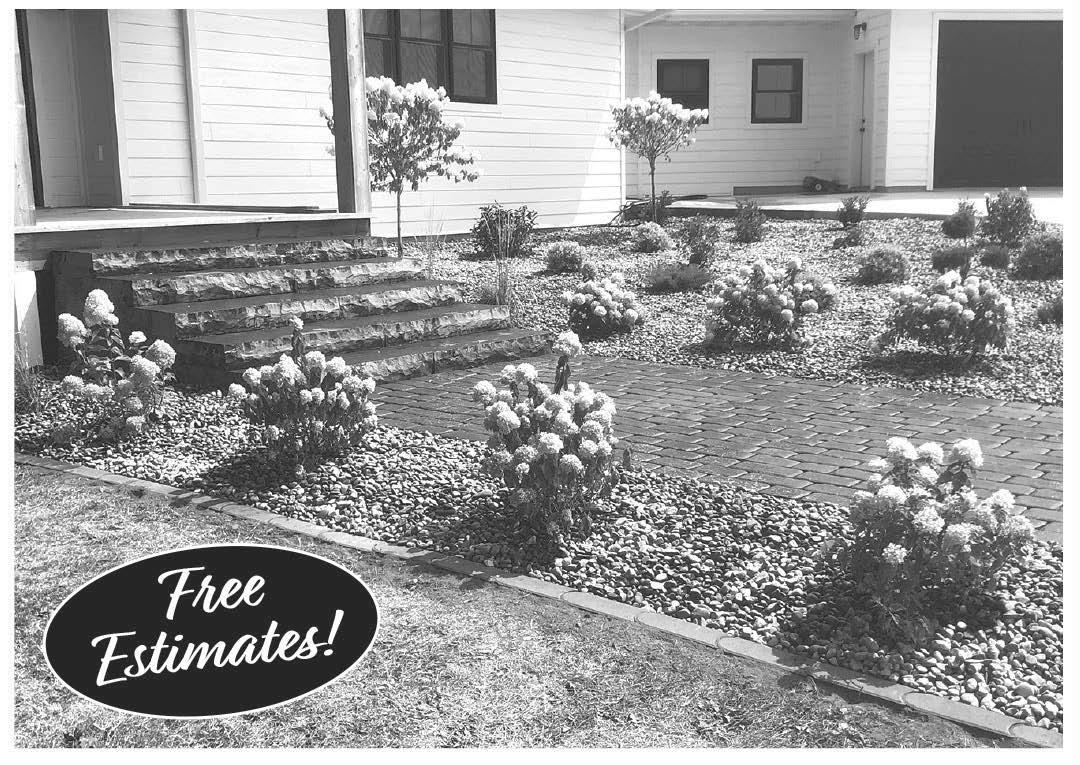


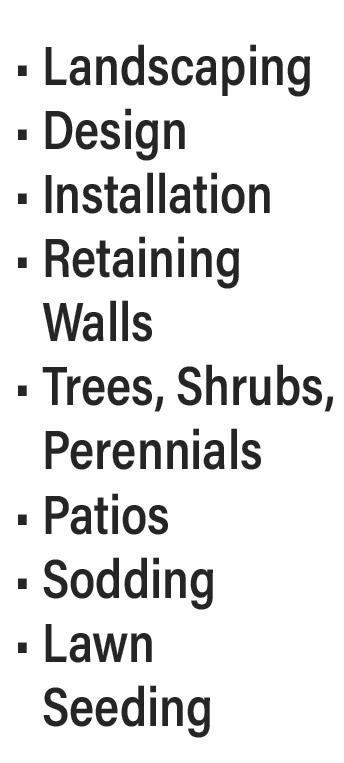

New growth is a hallmark of spring, whether it plays out in the birth of birds and bunnies or with the return of buds on trees and plant stalks. While most greenery rebounds naturally, lawns may need a little extra TLC in order to return to their once lush, green glory.
Revitalizing a lawn in spring is a multifaceted process but can be well worth the reward when green grass adds to a beautiful landscape and functional yard. Here is how to get started when the weather warms, courtesy of The Farmer’s Almanac and The Home Depot.

• Clean up debris. Spend a few hours raking up leaves from the lawn and removing any other winter debris like twigs so air can reach the grass below. Also remove any thatch that has developed.
• Test the soil.
Take a sample of the soil to determine its pH level and nutrient needs. Then you can make adjustments to set a strong foundation for the lawn to grow.
• Do some weeding. Pull out any weeds that have poked through early on and apply a pre-emergent herbicide to prevent additional weeds from taking over.
• Start the aeration process. A core aerator punches holes into the soil. This enables air and water to penetrate through to the roots.
• Overseed the lawn. Apply grass seeds over the lawn, paying special attention to any bare or thin areas so that the seed will fill in the lawn.
• Water consistently. It is important to water the lawn deeply and consistently, especially when the weather is dry, to help promote strong root development.
• Time fertilizer correctly. Apply a spring fertilizer around three weeks after the lawn starts to turn green or after the first two or three mowings. If fertilizer is applied too early it can feed weeds instead of the grass and result in fertilizer runoff.
• Mow to an appropriate height. Begin to mow when the ground is dry enough and the grass is long enough to need cutting. Leave some length to the lawn; otherwise, sunlight will reach the soil and encourage weed seeds to germinate.
With a little elbow grease at the start of spring, homeowners can establish strong and healthy lawns.
Gardening is a rewarding hobby that provides a great reason to get outdoors. Getting one’s hands dirty in the garden often pays off with a colorful, awe-inspiring and aesthetically appealing finished product.
Perennials are plants that live multiple years. Even though perennials may die back above ground each winter, their roots remain alive, which is why the colorful blooms typically return anew once warm weather makes a comeback. Gardeners who want to capitalize on the hardiness of perennials can consider these plants for their gardens this season.
Coreopsis
Coreopsis are perennials that thrive in a wide range of conditions, including various types of soil. Gardeners who find their soil is predominantly clay as well as those with sandy soil may be able to successfully plant coreopsis on their properties. Better Homes & Gardens notes coreopsis is native to the United States and produces colorful blooms that can withstand
hot and dry weather throughout the summer.
Russian sage
Russian sage produces purplish-blue flowers that BHG notes retain their color for weeks. Russian sage can be planted in a variety of the hardiness zones defined by the U.S. Department of Agriculture, and many gardening experts recommend them to gardeners whose local climates tend to be especially hot and dry.
Hellebore
BHG notes hellebore is ideal for gardeners who want some color in the early days of spring. Hellebores, sometimes referred to as “Lenten Roses,” have an early flowering season, so their blooms, which can be pink, white, purple, yellow, green, rose, or purple, can be a welcome sign in spring.
Baptisia
Gardening experts note these purple-blooming perennials thrive in sun. Gardeners who want perennials with particu-
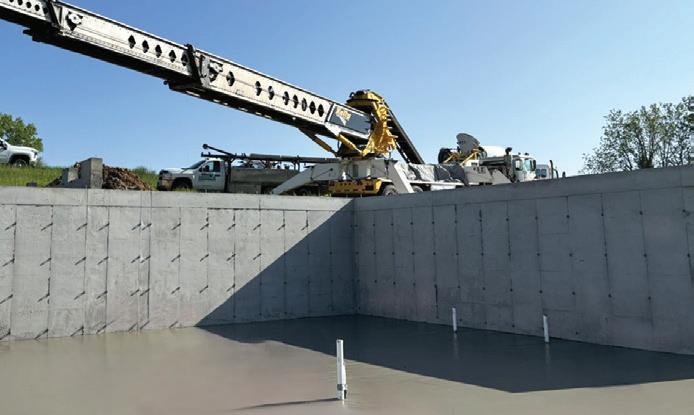
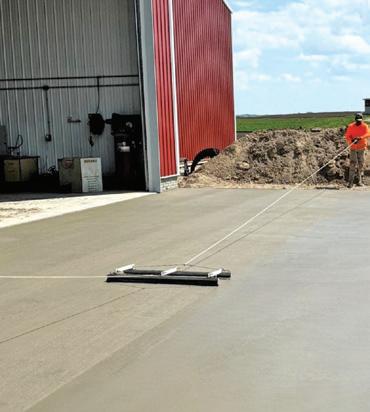
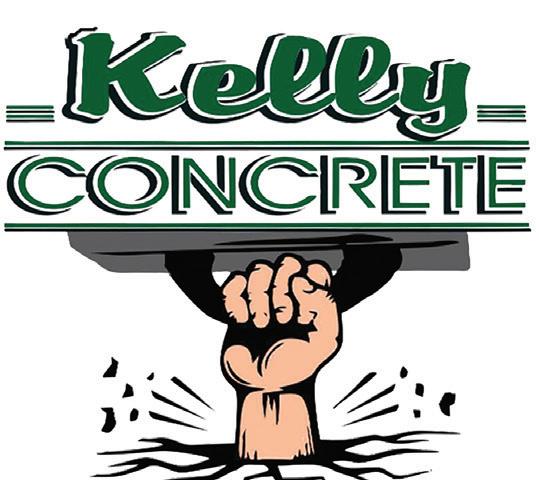


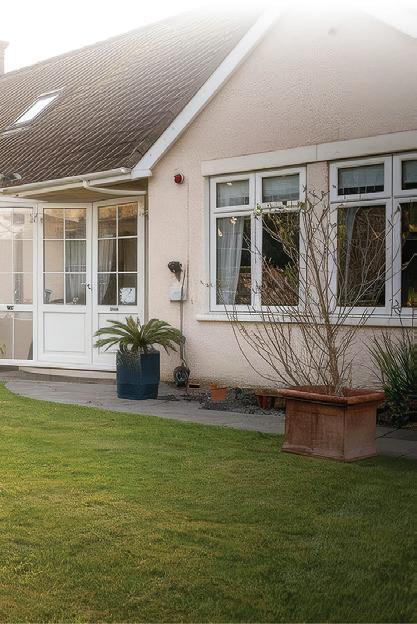


































larly long life expectancies can consider baptisia, as experts note they can live for many decades. Baptisia are drought-tolerant, and they can grow in soil that may not be considered great for other plants.
Coneflower
The unique look of coneflowers has generated many enthusiasts of these perennials that bloom from early summer
to fall. Coneflowers are highly adaptable, making them capable of growing in various zones and soil types. Once established, coneflowers are considered very drought-tolerant.
Perennials can add aesthetic appeal to landscapes year after year. Gardeners are urged to speak to experts at local gardening centers to identify the perfect plants for their gardens.









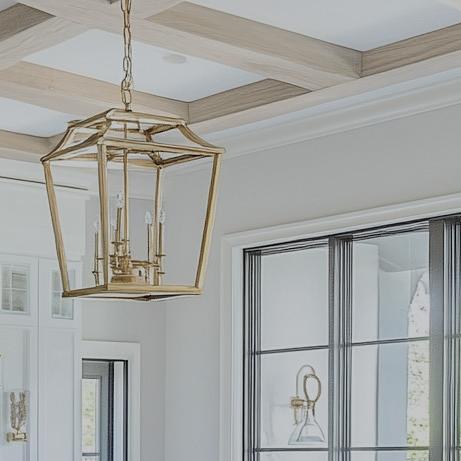



















































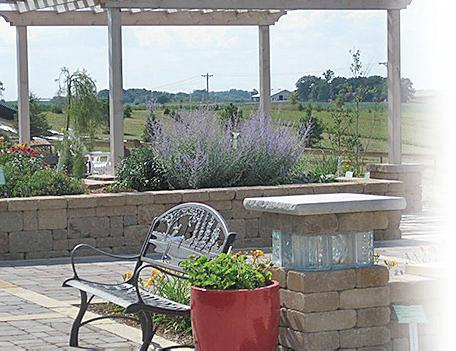









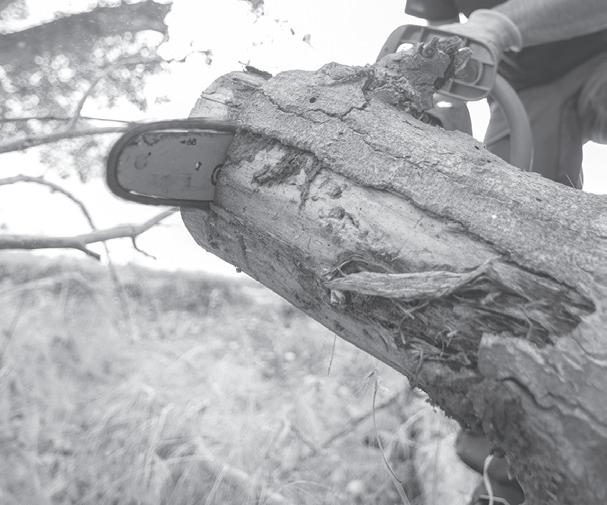
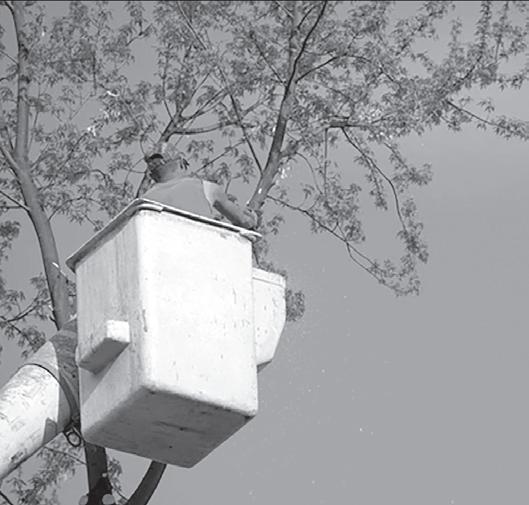
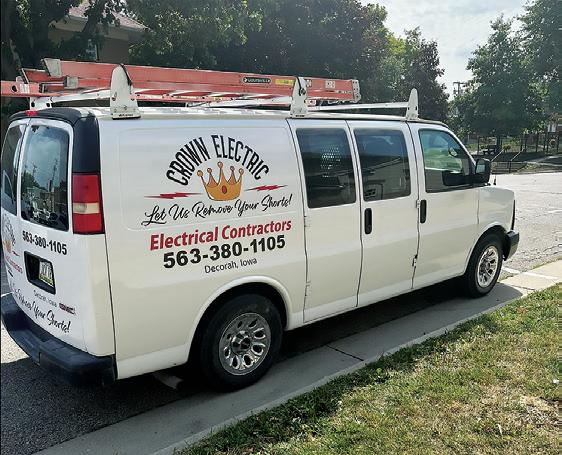












LEFT- Replacing the building's roof also meant replacing the joists holding it up, thus creating 18-foot-high ceilings in some areas of the apartments. BELOW-This kitchen island is on wheels, so it can be moved to the side in case of large gatherings. RIGHT- Space and lighting were priorities in designing the interiors of Meinholz's apartments. (Photos by Zach Jensen)
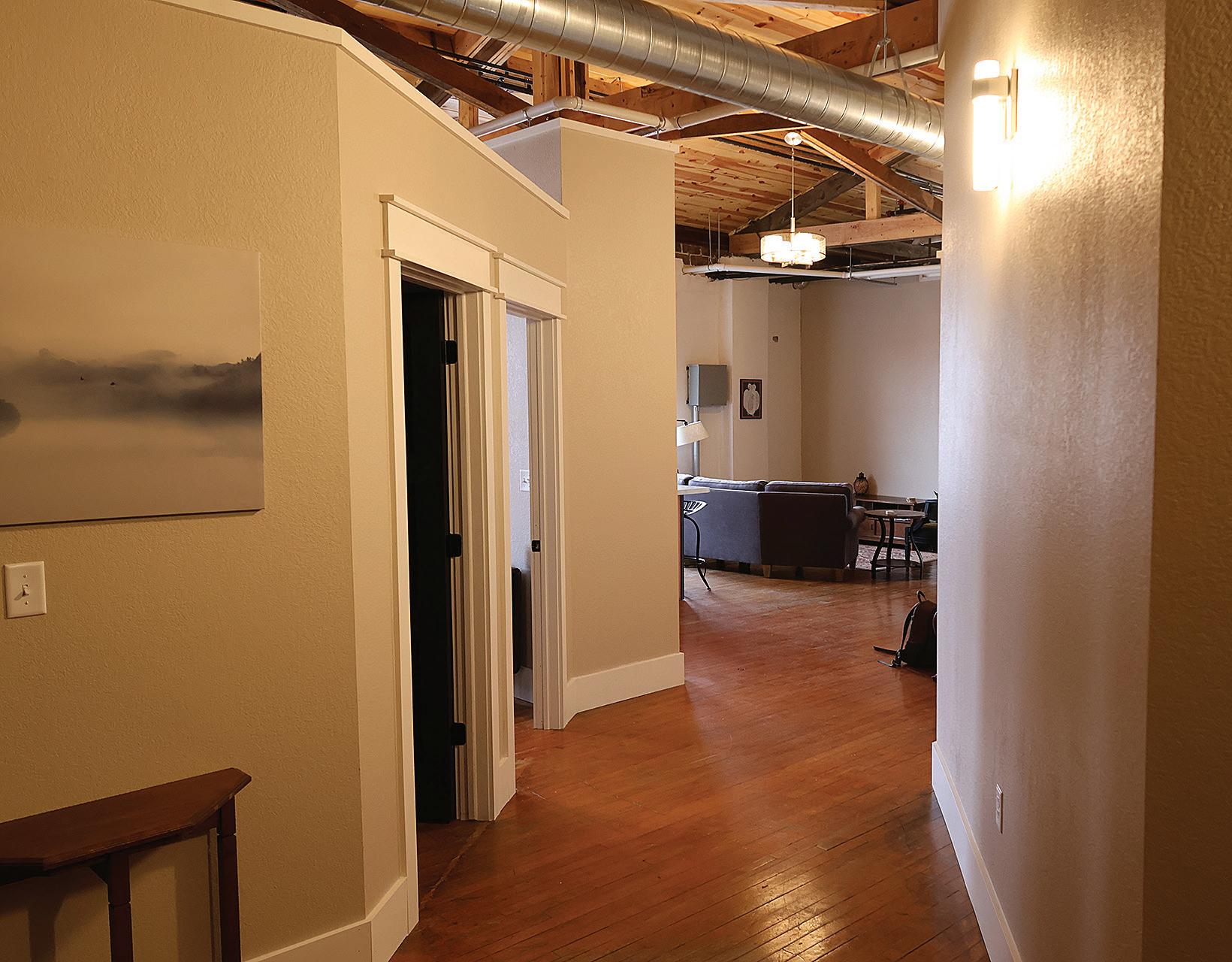
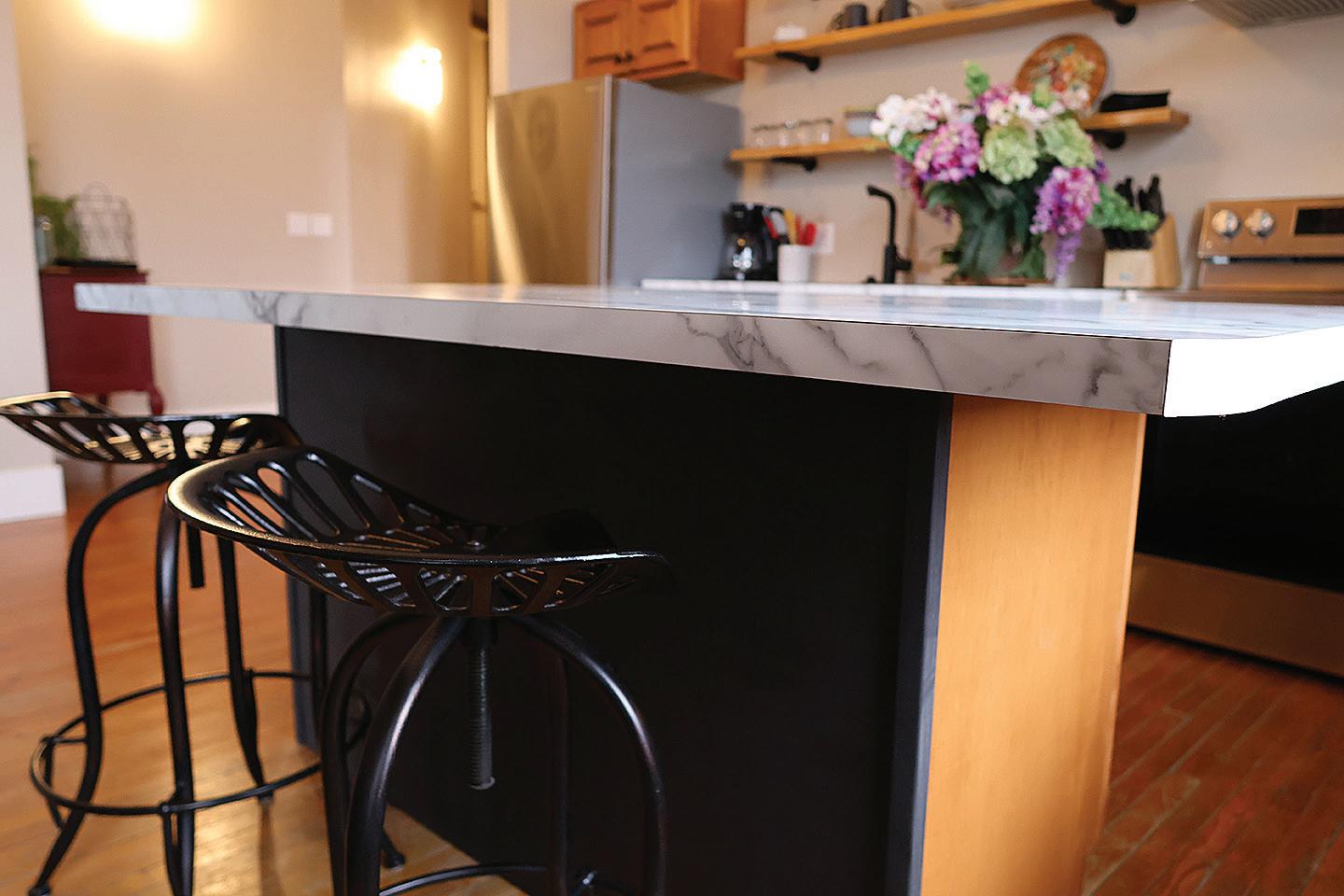
returned home to Madison, Wisconsin, for a time and lived with her parents while working two jobs — one of
“Seeing the change in people in a short amount of time was amazing,” Meinholz said.
“I asked the chiropractor what she was doing, and the more she told me, the more I realized I wanted to do this. So, from there, I enrolled at Palmer College of Chiropractic.”
Meinholz began her studies
at
“Because of my experience at Luther College, I loved Decorah,” she said. “On my visit day for Luther, I was on campus for only a few minutes, and I knew I was supposed to be there. It just felt like home. So, when I moved back here in 2013, it felt more like I was coming home. It was an easy choice.”
The budding chiropractor
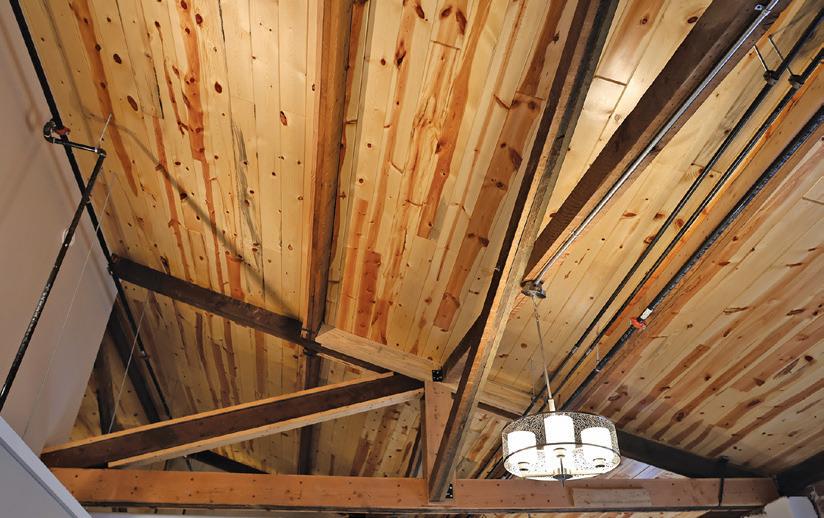


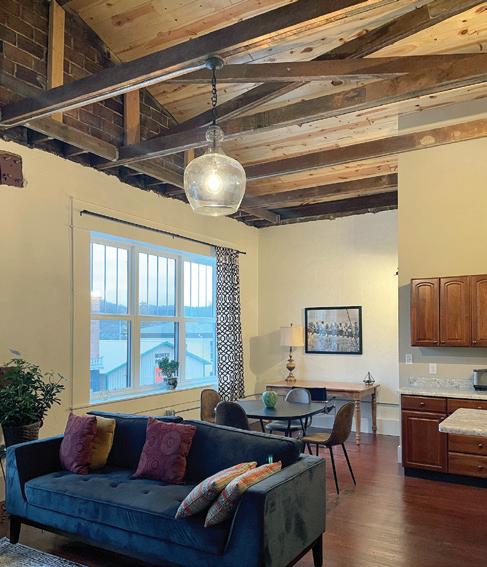

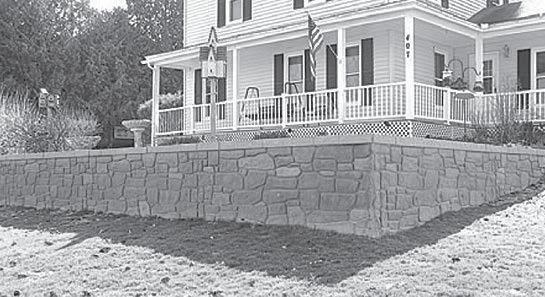
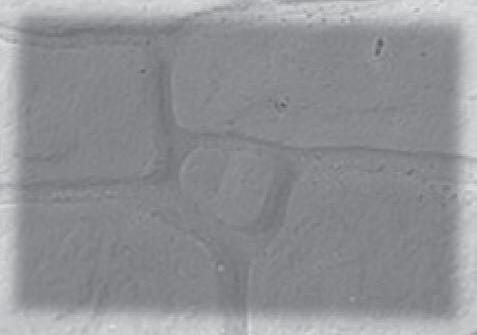

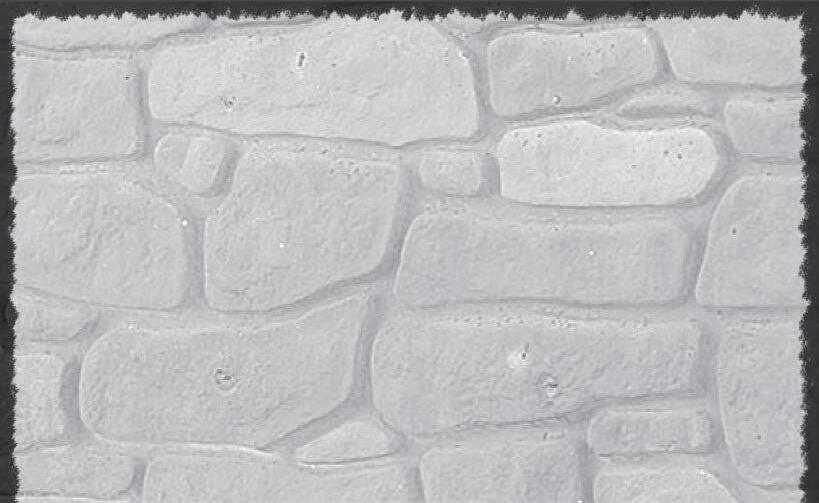
didn’t have enough funds to buy an office building, and Meinholz began renting office space in the historic Water Street building from Greg Marten. Meinholz declined Marten’s initial offer to sell the building that first year, but when the topic came up again six years later in 2019, she told Marten she could take possession of the property for what she called the right price — Meinholz said Marten proposed the right price the very next day.
“This is the first property I’ve bought, and it’s a big building,”
Meinholz said. “I don’t know why I started so big, but it’s turned out well.”
Getting to work
In the spring of 2020, with the COVID-19 pandemic in full swing, Meinholz found she had more time on her hands, and she decided to look more closely at the second floor of her office building, which had been previously rented by a single tenant.
Historic renovation continued on page B-7




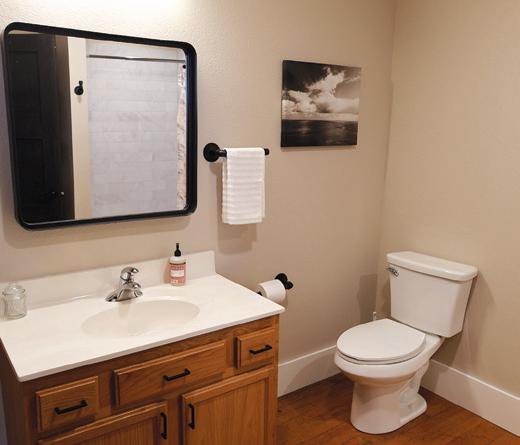
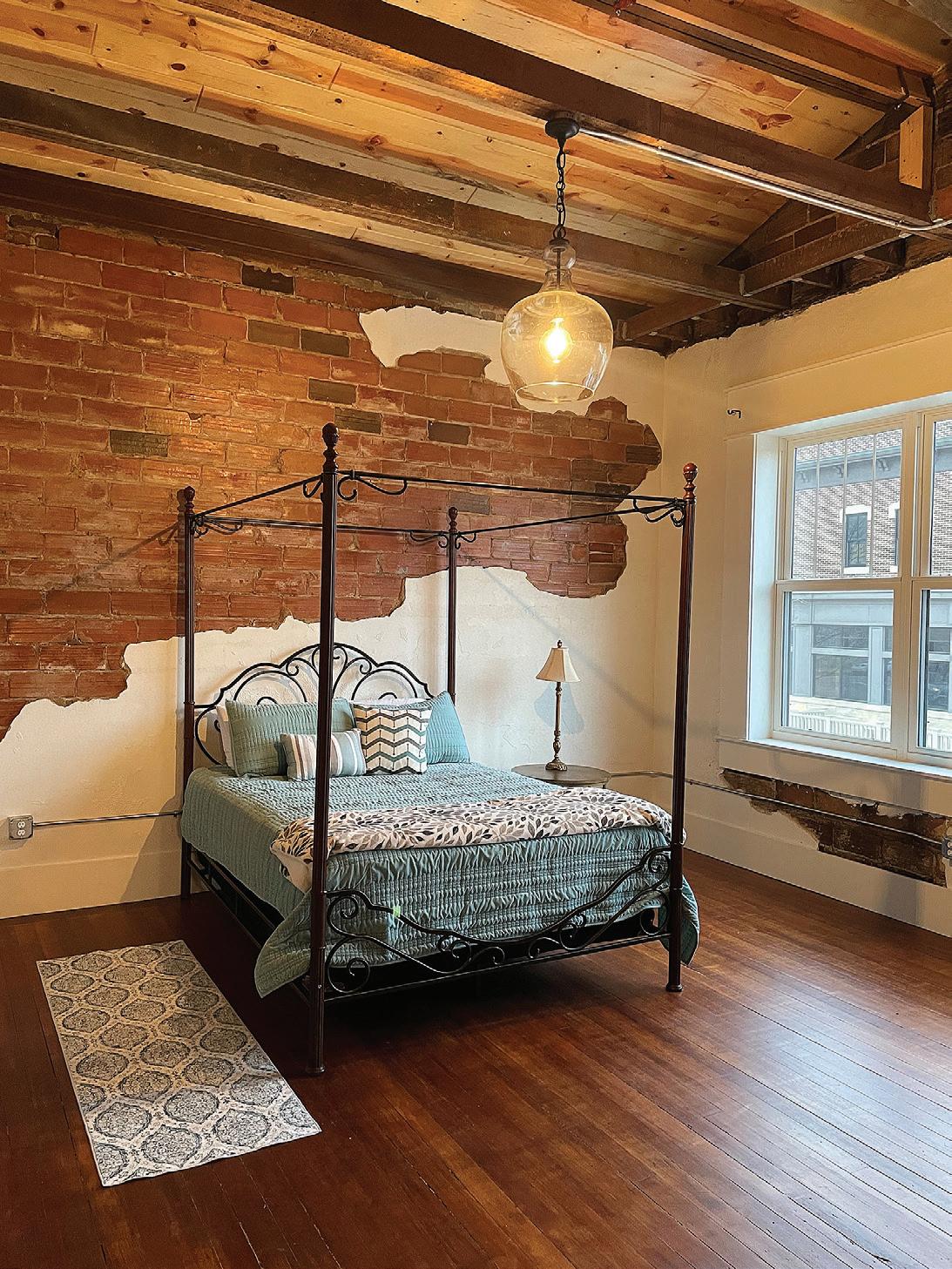
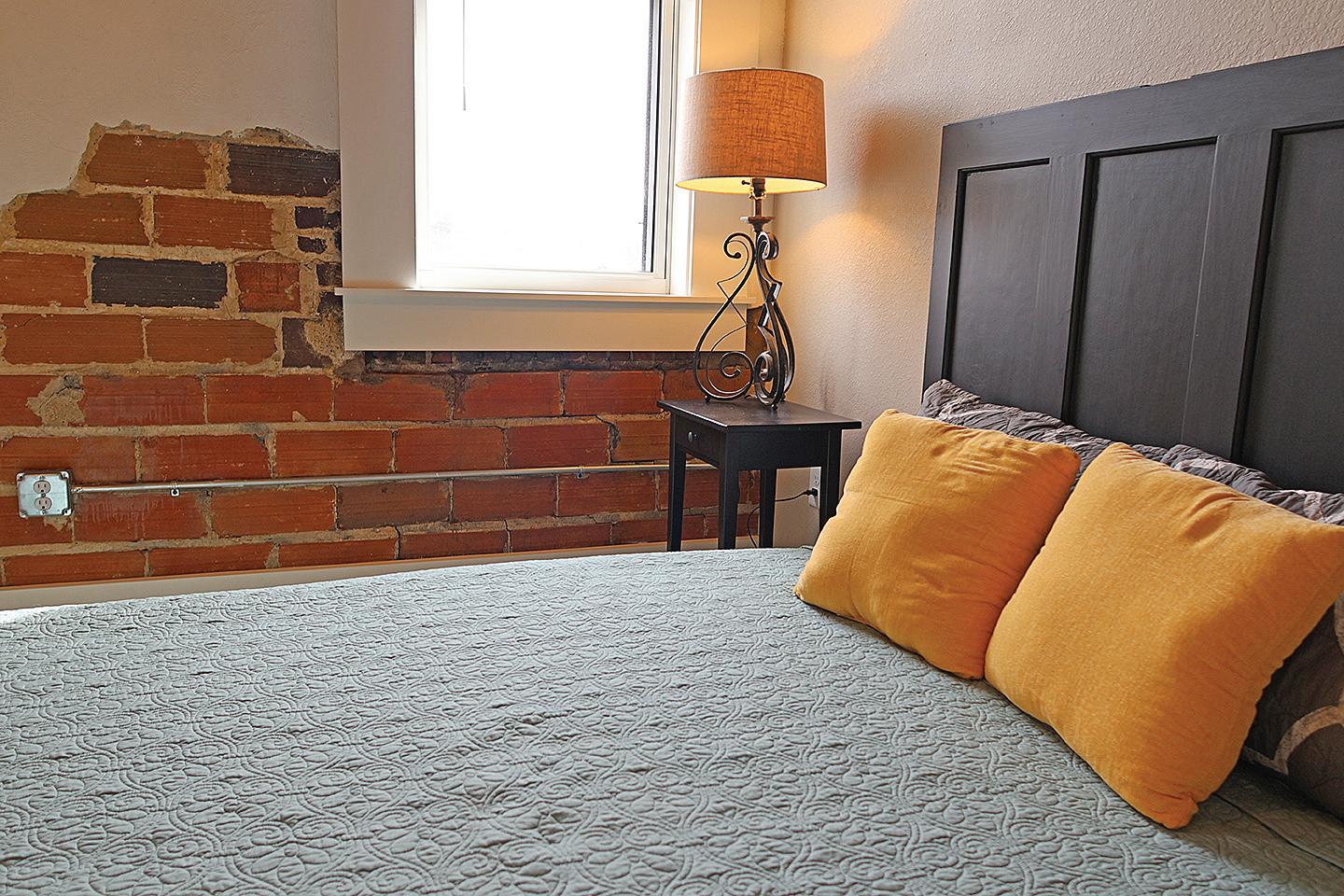




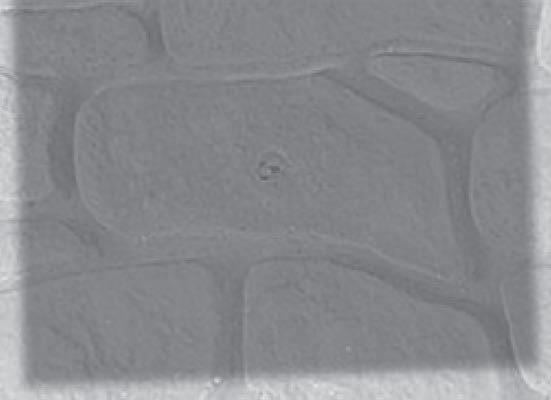
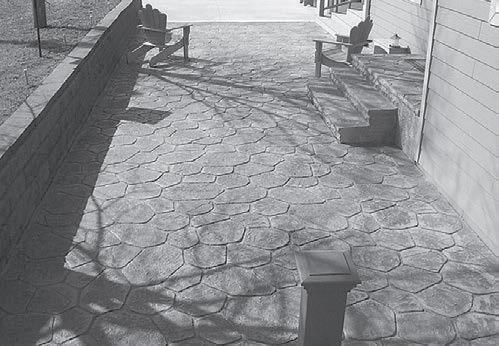
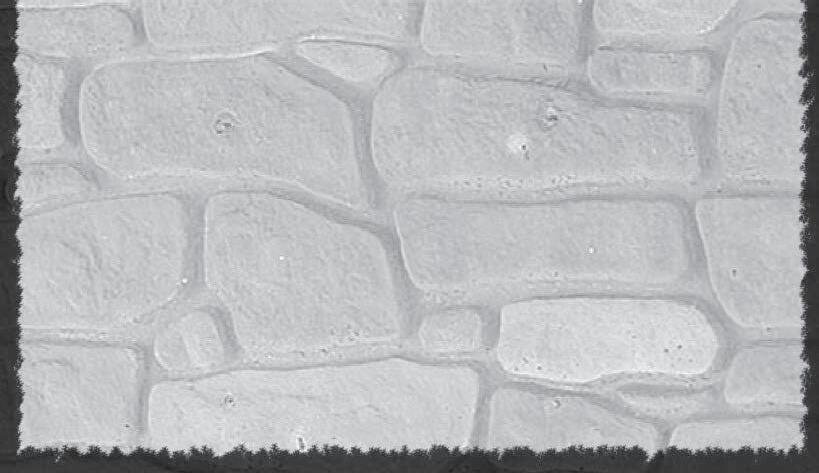

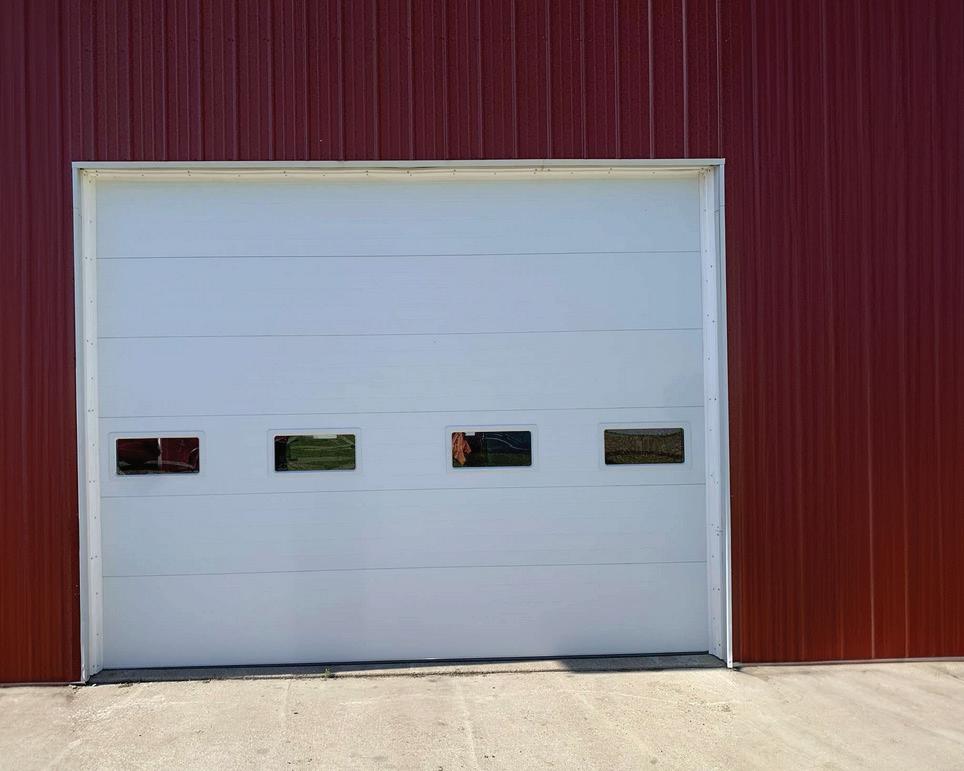










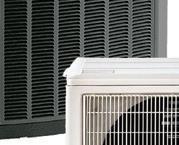
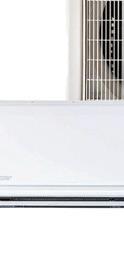
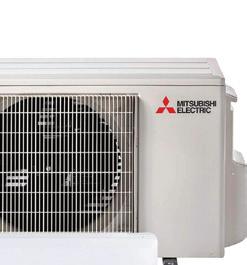

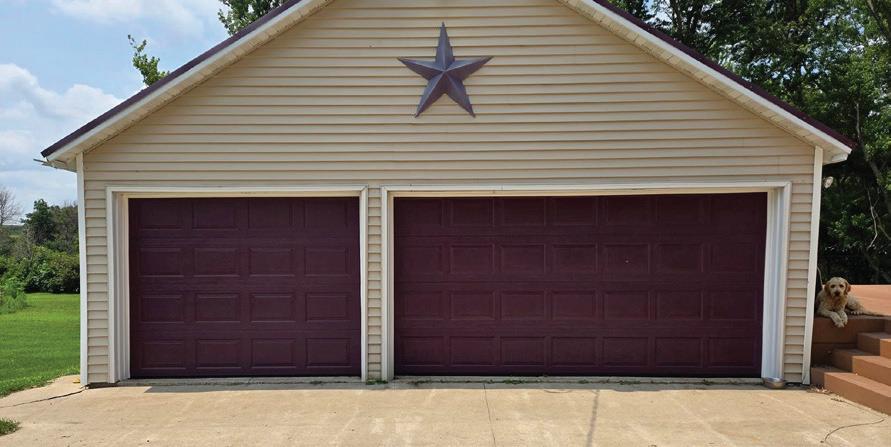

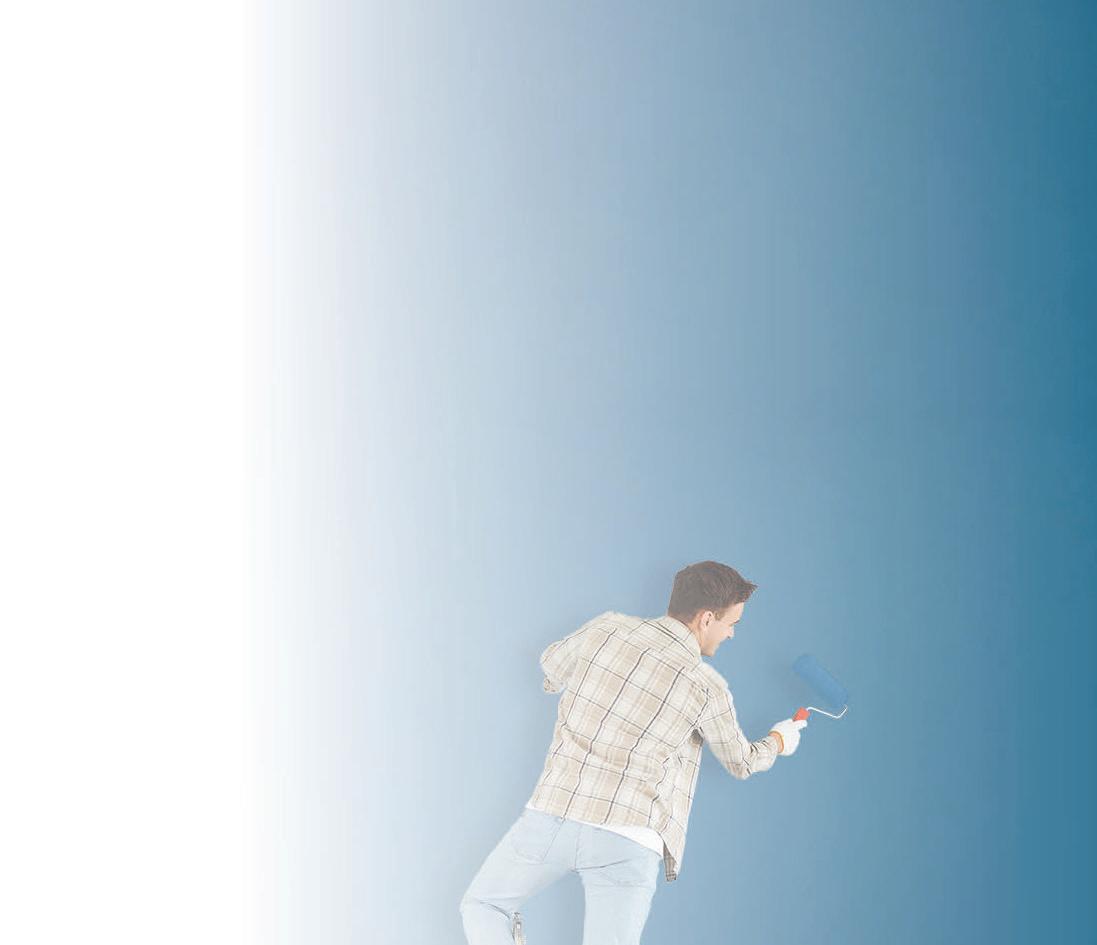

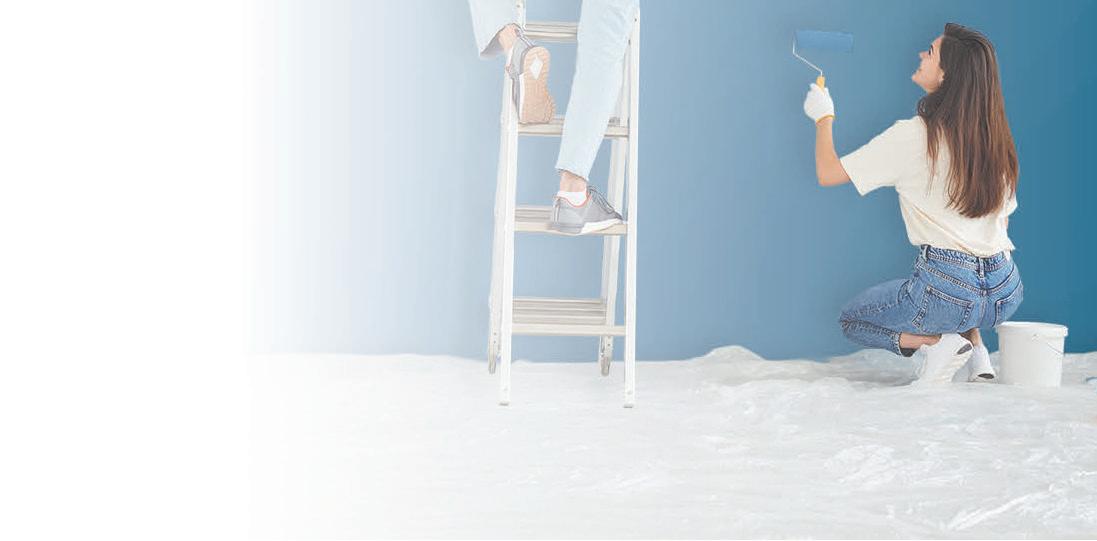







“I started looking at the ceiling, and I noticed there was a bow in it,” she said. “So, I found a ladder, climbed up and started peeling off ceiling tiles, and I could see all the cracks and breaks in the truss.”
Meinholz said her father, who had worked in construction his whole life, helped her assess the building’s upper level while he visited her in Decorah. Meinholz said they discovered each of the building’s trusses had broken, and her father recommended extra supports be put in place to support the sagging roof. She then hired a crew to stabilize the roof — which she claimed was almost a foot too low. Meinholz originally planned to install a drop ceiling in the upper-level space, but that option was taken off the table after Meinholz said she and a structural engineer agreed additional work would be required to address gaps a previous contractor had left between the trusses and other structural hardware — Meinholz said the change in plans left her second story with 18foot ceilings, which turned out to be a blessing.
“I love it, and I’m glad to have it, but it was not my idea,” she said. “I’m more than happy, because everything is beautiful up here, and everything together makes it look good, but the ceiling is what everyone loves.”
The truss repairs were completed by the end of 2023, along with tuckpointing as well as the installation of new windows, a garage door and other features. She had decided the previous year that she wanted to create several apartments on her building’s second floor, but she didn’t want to provide the same type of apartment she herself lived in when she first returned to Decorah — she described her own former living space as fine, but lacking certain appliances and downsized to the point that the apartment’s oven was too small to hold a frozen pizza.
“I wanted to make the apartments something that I would want to live in,” Meinholz said.
“These apartments are for people who want their home to be like a retreat or an escape — somewhere that feels like they can get away from the world and also someplace that helps make my tenants’ lives easier. So, every unit has its own laundry and dishwasher.”
The office building’s upper level now features five apartments — three one-bedroom units, which are 850-1,000 square feet in size, and a pair of 1,250 square foot two-bedroom units. Rent for the smallest apartment is set at $1,375 per

month, while the two-bedroom units go for $1,850 per month. Meinholz pays the electrical bill for each of her tenants.
Meinholz said she prefers one-year leases, but she indicated she may be open to shorter agreements. She noted two of her current tenants started as short-term renters but enjoyed the apartment so much they ended up staying long term.
“Sometimes, people want to splurge on their living situation and not have a fancy car,” she said. “That’s who these apartments are for. They want a nice spot, but they don’t necessarily want to own anything. They don’t want to do yard work or shovel snow, and they want a nicer place to live long-term.”
Form and function
Meinholz went on to say she placed a heavy emphasis on functionality in each unit’s kitchen.
“I like to cook, so I tried to design them how I would want them if I was cooking,” Meinholz said. “So, you can chop on the island and turn around to use the sink. I tried to lay it out in a very practical cooking format.”
She went on to say she adapted an architect’s general plans for the apartments, adjusting specifics — removing sinks from most of the kitchen islands, for example.
“I do have one island with a sink in it, but for the island in the two-bedroom, I took the sink out and put the island on wheels, so it can be moved if they need more space to host a larger dinner or a birthday party,” Meinholz said. “So, the architect gave me a good starting point, and I had it all custom built to fit the needs of my future tenants. It’s impressive, but it’s simple.”
She said her tenants also seem to enjoy the oversized bathrooms in each apartment.
“I think the bathroom either makes or breaks an apartment,”

Meinholz said. “It’s where I spend most of my time getting ready in the morning and, for myself personally, it’s a space that I want to feel good in before heading out the door. It changes how you exit out into the world. There should also be plenty of room for dancing in the bathroom as you get ready.”
Meinholz and her mother designed, decorated and furnished all the apartments with a common theme — antique charm mixed with modern conveniences and an open-air industrial aesthetic overhead.
“Somehow, it works,” she said. “I wish I could take credit for it. I really wanted to show off the old walls with the old floors, so I had to have other antiques to help show that off, and I wasn’t going to put old appliances in.”
Meinholz said she was also able to fulfill a personal conviction and reduce waste by purchasing appliances with cosmetic damage in unexposed areas — such as the rear of a stove unit.
“Doing that saved me thousands of dollars, and it helped prevent them from being taken to the landfill, which is also important to me — to reuse what we already have,” she said.
Much of the furniture in
ABOVE- Meinholz designed and furnished her apartments the way she would want them if she were living in them — including wide open spaces, plenty of light and second-hand furniture such as this chair and sofa in the two-bedroom apartment. LEFT- All bedrooms in Meinholz's apartments include spacious walk-in closets. (Photos by Zach Jensen)
Meinholz’s apartments, aside from the beds, was purchased second-hand, and some of it was even repurposed. Meinholz found a discarded fireplace mantle on a street corner, took it home and refinished it — the mantle is now a built-in shelf in one of the apartment unit’s bathroom.
“When you’re in one of these apartments, you know you’re in an old building,” she said. “So, I tried to reuse stuff as much as possible. Almost every interior door in here was a door that was already up here, or it was a door I found second-hand online from houses or buildings of the same age.”
Meinholz’s apartments were finished in November of 2024, and she said she’s more than pleased with the results.
“It looks better than I thought it would,” she said of the yearslong renovation project. “My brain couldn’t imagine it this good. I’m glad I did it as housing, because people are always going to need a place to live.”
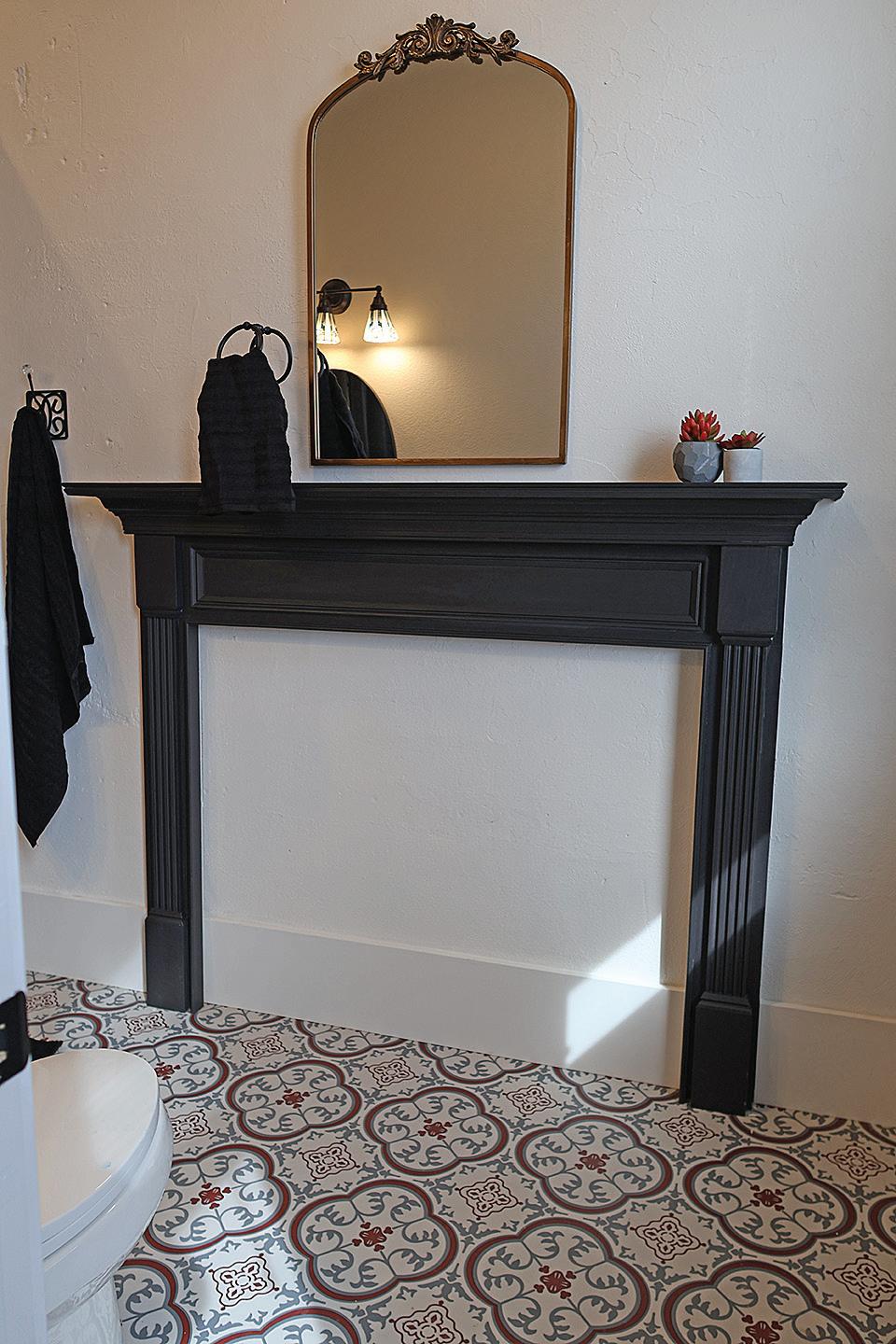
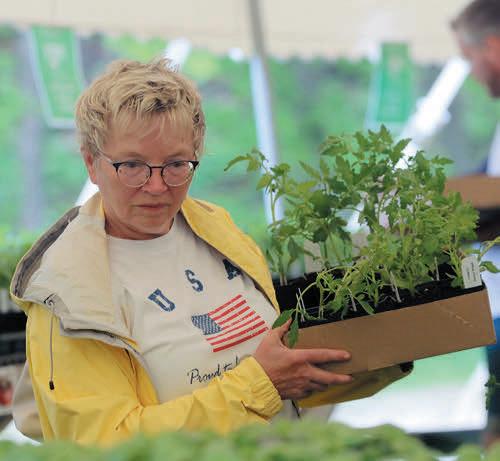







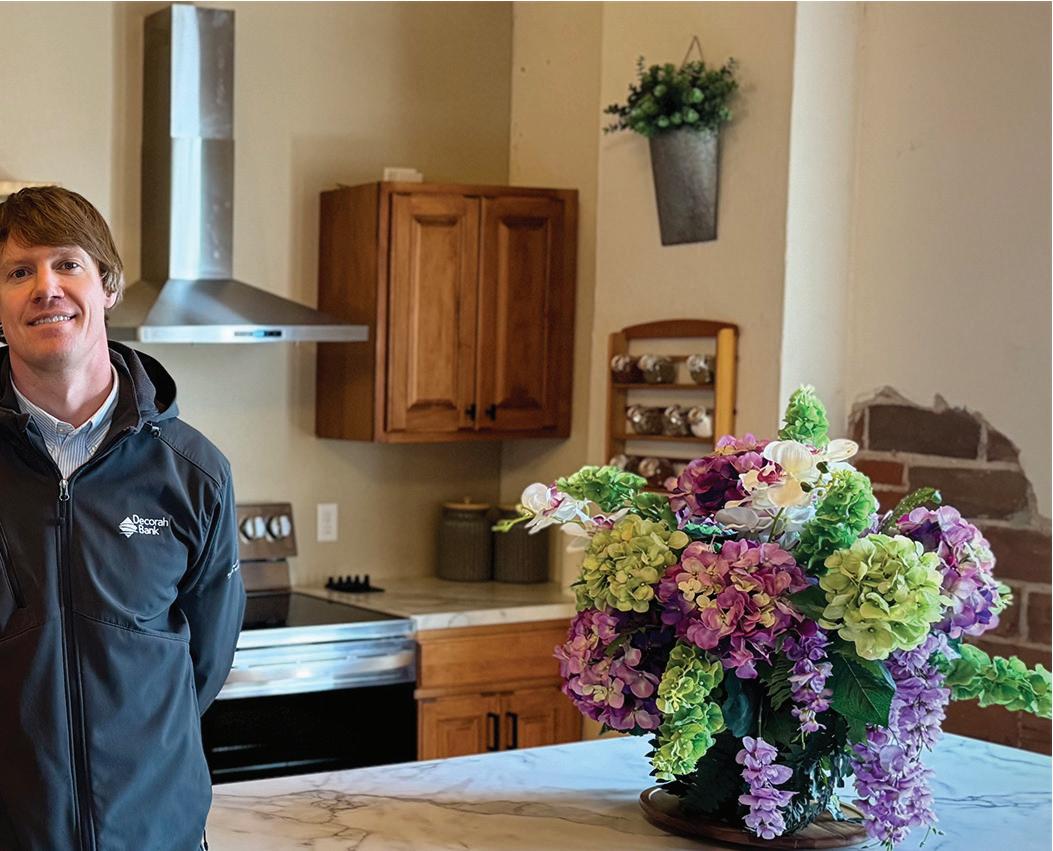

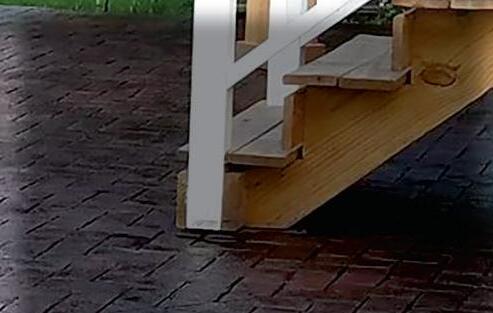


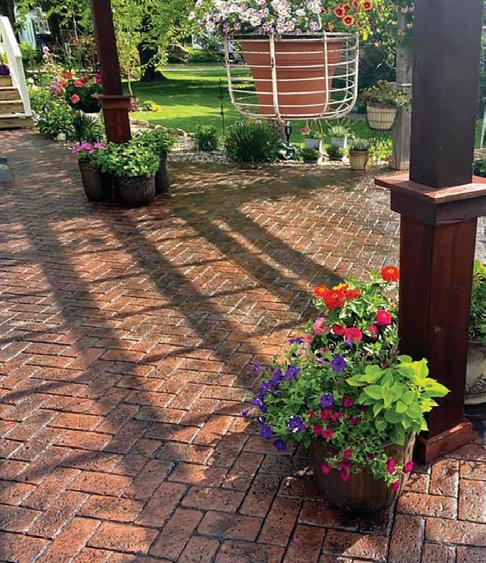


Remodeling
not obstructed in open floor plans, homeowners can
enjoy a cohesive design style across each level of the home.
Eco-friendly features
Eco-friendly features modernize homes and may even earn homeowners rebates from the government. From positioning rooms to take advantage of natural sunlight to using environmentally responsible materials throughout a home, modern homes can function with a much smaller carbon footprint than older structures.
Smart home technology
A smart home is equipped with appliances and other devices that can be controlled remotely, typically from a phone or computer connected to the internet. Investopedia notes that smart home technology offers homeowners convenience
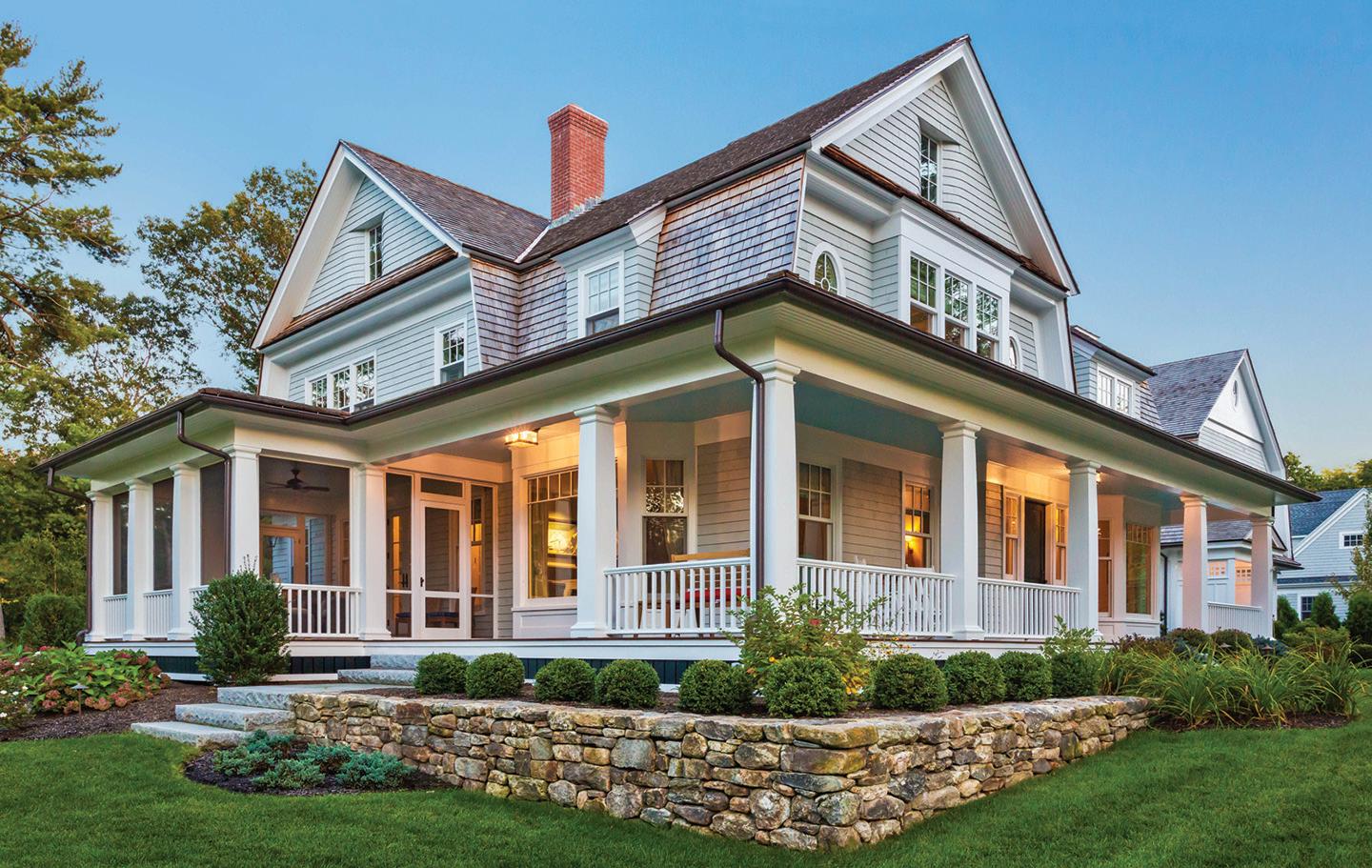


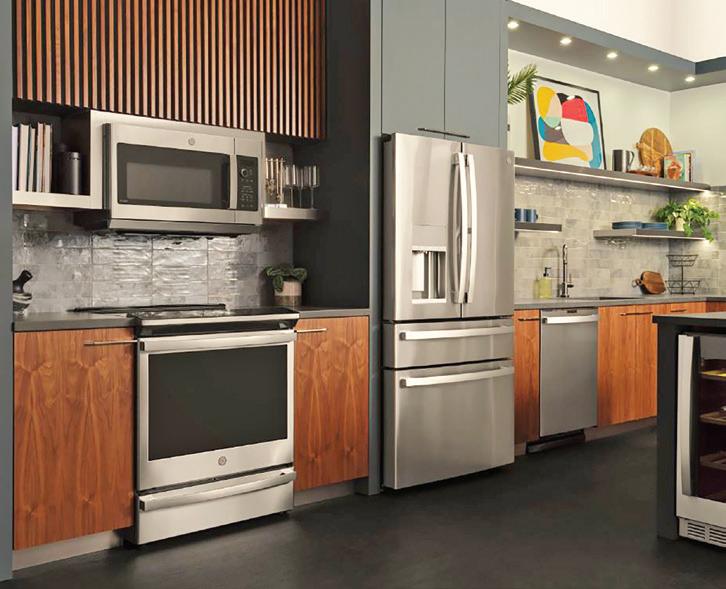
and cost savings. Smart home technology is available across a wide range of budgets, ranging from thousands of dollars for a complete home automation to roughly $100 for a small change like a smart thermostat.
Accessibility features
A home that can grow with its residents is advantageous. When choosing renovations, features like slip-resistant flooring, stylish grab bars and low-threshold or barrier-free showers can enable homeowners to age in place more comfortably.
Dual owner’s suites
Dual owner’s suites can be an asset for couples who choose to sleep separately. The Sleep Foundation says individuals choose to sleep in different rooms for a variety of reasons, such as reduced sleep interruptions and improved sleep quality. Plus, an extra bedroom can come in handy when one person is ill or in the event a partner snores. Rather than one person in the relationship getting the “lesser” space, certain homebuilders now offer plans for dual owner’s suites so both people get the features they desire in a bedroom.
Three-season room
Many homeowners aspire to bridge the gap between the indoors and outside. Three-season rooms help transition from the yard to the interior of a home, and offer a touch of nature without the bugs or unpleasant elements.
A number of home improvements can bring homes up to the standards of modern living.
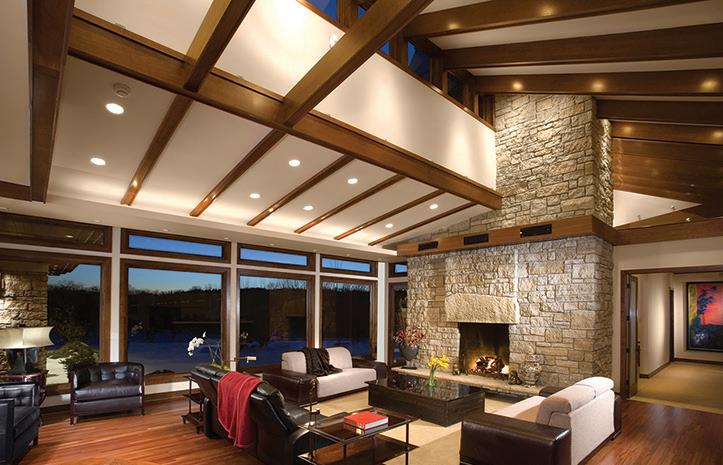
Trends that seem ubiquitous one day can seemingly vanish before the sun rises again just 24 hours later. That’s especially true in the digital age, when overnight celebrities and viral videos can be on the tips of everyone’s tongue before being forgotten entirely when the next online sensation emerges in an increasingly rapid news cycle. Home trends typically benefit from a longer shelf life than viral videos and other fads that originate on the internet, and that’s something renovation-minded homeowners should consider when improving their homes. Homeowners preparing to do just that can consider these notable trends, which the online renovation experts at Houzz suggest will be particularly popular in the year ahead.
Rounded furnishings
Houzz noted that gentle curves and rounded edges embody the organic modern styles
that many current homeowners love. Rounded dining tables and similarly circular coffee tables may merit consideration among homeowners who want to embrace popular trends.
Arches
Houzz cites arches among the more popular modern trends, and the experts at Better Homes & Gardens note this unique, eye-catching style has been gaining popularity for several years. Better Homes & Gardens suggests that part of the appeal of arched doorways could be their deviation from a more traditional door shape. That uniqueness draws the attention of residents and visitors alike, and Houzz notes that arched windows, cabinets and even millwork details are part of the pivot toward arches.
Stove alcoves
If it’s a touch of history homeowners want, kitchen range al-
coves might be just the project for them. Range alcoves call an earlier time to mind when wood burning stoves were commonplace. The report from Houzz notes range alcoves immediately draw attention, which undoubtedly adds to their appeal.
Wood for warmth
Homeowners who hear
“wood and warmth” might think fireplaces, but Houzz reports that wood elements are being incorporated into interior designs as a means to giving homes a more cozy vibe. Ceiling beams, trim, wall paneling, and cabinetry are utilizing wood to add warmth to a home.
Trends come and go, but home trends typically have more staying power than styles that emerge in other arenas.
Homeowners who want to upgrade their home interiors can consider the latest trends and choose those that align with their own personal tastes.
Kitchens are the hub of many homes. Perhaps due to their popularity as gathering spaces, kitchens are popular rooms to renovate to ensure they remain functional and attractive through the years.
these devices can add to kitchen clutter. A roll-down door “appliance garage” will conceal appliances kept on counters.
mixer from a dedicated cabinet any time it’s needed.
Microwave drawer


















Online resources such as Houzz and Fixr indicate kitchens are consistently ranked among the most popular rooms to renovate. Homeowners looking to enhance the functionality and look of their kitchens can consider these fun and innovative features as they plan renovations.
Concealed countertop appliances
The latest small appliances and gadgets can make easy work of preparing food, but
Cleverly placed storage Additional storage also can give kitchens a cleaner look. Narrow, pull-out drawers can be nestled in between cabinets or appliances to make the most of tight spaces. These spots are perfect for utensils or spice containers.
Mixer lift
Baking enthusiasts will cheer if they don’t have to lift a heavy stand mixer when preparing foods. A mixer lift is an innovative feature that enables homeowners to raise and lower the


A microwave drawer maximizes space and boasts a sleek design. Instead of installing a microwave above a stove, homeowners can enjoy a beautiful range hood.
Wine refrigerator
Available in a variety of sizes, wine refrigerators offer stylish storage for any wine lover’s collection. A refrigerator can be installed into an island or lower cabinet and integrated into the rest of the kitchen.
Double ovens
Double ovens are built di-
rectly into cabinetry and offer convenience and a sleek, modern look. Two ovens can make entertaining crowds easier, and separating the ovens from the burners lets homeowners install a cooktop elsewhere in the kitchen, which can expand floorplan options.
Pot filler
A special faucet near the cooktop makes it much easier to fill heavy pasta pots. A pot filler can be quite handy for those who cook a lot and do not want to lug heavy pots from the sink to the stove.
Outfitting a modern kitchen during a renovation can involve some innovative features to enhance the space.








